#i love the math part of improvising a pattern
Explore tagged Tumblr posts
Text
doing the math is fun until you have to actually make your own pattern
making your own patterns is fun until you have to actually do the math
#i totally respect OPs perspective here btw#i just find it so funny that mine is the opposite#i love the math part of improvising a pattern#but actually making it into a pattern#we hates it
171 notes
·
View notes
Text
Plugging In

genre: band au
pairing: bassist!soobin x guitarist!reader
warning: soobin is scared of being on stage but then hes ok, not proofread
word count: 1.1k
(Chapter List)
~~~~~~~~~~~~~~~~~~~~~~~~~~~~~~~~~~~~~~~~~~~~~~~~~~~~~~~~~~~~~~~
▸ Now Playing: unplugged boy
It’s dark outside; the only light is a lamp from the kitchen and a permanent night light to the right of the couch. The backlighting illuminates the kitchen and living room. There’s a scattering of sheet music that adorns the sofa. You and Soobin had been practicing the piece—one of the strategies you read online for getting over stage fright.
Your fingers trace absentminded patterns on the music, crinkling it slightly. “Do you want to do—” You were going to ask to go over a part, except you see him fidgeting with the hem of his shirt and the starry strap of his bass. “Soobin?” You can hear the laced concern in your voice.
“Yeah. It’s just a lot.” He says, essentially saying that he’s fine. “The thought of performing, you know, it’s scary.” He confesses.
“Okay,” You steady your tone, “if we’re freaking out, it’s freak out time. I’m setting a timer.” You announce. You press go on a one-minute timer. Soyoon and Yeonjun will be here in three minutes if they’re punctual. “Tell me what’s scaring you.”
“I’m scared that I’m going to mess up, and I’m scared that I’m going to freeze. I’m scared of all of it. I’m scared that they’ll laugh at me. I’m—I’m scared I’ll let you down, you’ve been trying so hard for this,” He says slowly, before adding in a faint voice, “for me.” His voice is shaky. Your heart aches at his vulnerability. You hesitantly reach for his shoulder, giving it a reassuring squeeze. “Did you know I used to play unplugged so that no one would hear me play?” He laughs a little bit at himself, and you offer a slight smile as you tilt your head, trying to show him some semblance of understanding.
“You sound better plugged in.” You tell him. “You won't mess up. And even if you do, I'll be right there with you. I’ve seen you improvise on the spot, you’re amazing. We'll get through any mistake together.” You promise, and the doorbell rings right as you finish your words. “Alright, freak out time is done.” He still looks shaken up. Executing a solution, you lurch towards him, “Boo!”
“Ack!” His eyes go wide as he gets startled, and then he laughs. “You’re terrible. That was really scary.” Scaring him double might not be the best choice, but you guess it’s like math, the two negatives will cancel out.
“Did I distract you?”
“Obviously.” He responds, and you throw your arms around him in a hug.
“We got this, Soobin.” You tell him, and if you were less focused on performing, you might’ve noticed how his breath hitches. He does look less anxious, though. “Soyoon!” You sing as you traipse out of the room, leaving him with his heart beating out of his chest before he takes a deep breath, and picks up his bass to meet you in the main room.
When he meets you, bass in hand, Soyoon, and Yeonjun sit on the couch, talking with you as you tune your guitar for the gazillionth time. Admittedly, performing in front of two of your friends is a little bit embarrassing, but you know they’ll support you the whole way.
As Soobin attaches the strap to the guitar, you hear a yell, “Go Soobin! We love you!” The yell is loud, and of course, it’s Yeonjun. You can see Soobin flush at the callout and you laugh, and you don’t know if you’re laughing at Yeonjun or Soobin. You do know you’re looking at Soobin, though.
“Are you ready?” You quietly ask, and he quickly nods as he tunes the final string on his bass. “We got it. Remember that.” You order him as he takes a deep breath. “Whenever you’re ready.” You tell him to start the bass line, loud enough that Soyoon and Yeonjun can hear, and he begins the bass line.
As you join in with the guitar, you can see him take another shaky breath, and you can tell the weakness of his strums, when the song calls for more confidence. Trying to be an example, you turn back at him and flash a huge smile. You mouth words of encouragement and you see him close his eyes, trying to calm himself down. When he opens his eyes, his strums are stronger and he gives you a nod. It’s a good thing he got his confidence when he did because his vocal part immediately started. He’s right on cue. When you look back at your audience of two, you see Soyoon and Yeonjun smiling, clearly enjoying the performance. You can’t help but smile as you hear Soobin jamming his heart out. It’s like a switch flipped in him. He doesn’t look so reserved anymore. You imagine him on a stage like this, and you can only imagine how much fun it would be to perform with this amount of energy from him. You hope whatever mix of jumpscaring, designated freak-out-time and support continues working for him. You’d jump-scare him every day if it frees him up like this, not that you would mind. It was kind of nice watching him laugh after you scared him. Your cue sucks you out of your thoughts, and you add your voice to the music miscellany in your living room.
When you strum the final chord, Soyoon and Yeonjun erupt into cheering. Soobin starts to laugh and immediately turns to look at you.
With a tone that’s authentic to him, he starts to say something. “That was really fun, actually.” Your heart swells with relief to hear him say the words you’ve been dying to hear.
“I’m proud of us.” You tell him with a smile, and he turns pink like when Yeonjun called his name.
“I can’t wait to join in!” Soyoon says, loud over Yeonjun’s continuous cheering.
Seeing his cue to stop clapping, Yeonjun agrees with Soyoon, “Me too. I’d love to produce a cover of this. Maybe I could use it for my class, even.” He says.
“Or, we could produce one of the pieces I write, and you,” She points directly at your nose, “and Soobin can adapt it to the guitar and bass. We can come up with something all together for the keyboard and drums! I’ve been working on melodies.” She rambles, and you smile as you exaggeratedly nod to ensure she sees it.
“What’s our band name?” Yeonjun asks, setting Soobin up to finalize his idea.
“Going Four.” Soobin confidently announces.
~~~~~~~~~~~~~~~~~~~~~~~~~~~~~~~~~~~~~~~~~~~~~~~~~~~~~~~~~~~~~~~
taglist: @eclipse-777 got another chapter for uuu
#soobin#soobin fluff#soobin x reader#txt fluff#txt#bassist!soobin#guitarist!reader#tomorrow x together#tomorrow x together fluff#tomorrow x together comfort#soobin comfort#txt comfort#willeeam shakespeare
26 notes
·
View notes
Text
Christmas miku!
A brief, probably unhelpful rundown of how i impulsively made this cosplay in two days (with a LARGE helping of creative liberty) - part one!
(I'm writing this at eleven pm)

This entire cosplay was literally only because I saw this arch downtown and thought it would make for a cute asf picture - and I WAS RIGHT IT DID - but that does mean I had to majorly improvise.
First off- this entire cosplay was made out of a thrifted prom dress (thank you local liquidation store for selling formal dresses for eight dollars) and about half a yard of the cheapest sherpa I could find (thank you Joann Fabric I love you Joann Fabric). There are a LOT of deviances from the original outfit - most notably, Miku has her normal hairstyle (long ass pigtails...). My regular Miku wig is, naturally, horrifically tangled from being stored incorrectly, so I ended up going for the wig I bought for when I eventually do Vampire Miku. It's a lot less bright and obviously a lot shorter, but I kind of like the dark green? It feels a little more Christmas to me. Miku also wears gloves (fuck no) and has knee-high red boots instead of the thigh-highs and mary jane heels I went for. Let this be a lesson in creative liberty - if you are in a rush and it isn't for a competition, be lazy.
I can go more into detail on every thing in part two, but the dress was literally just three rectangles i stitched together and then took in to fit. Shift dresses are easy, I'm lazy, and I can't be bothered to make an actual pattern for one of these even though I've made at least four at this point. I was also very lazy when it came to finishing my seams- all I did was go in with pinking shears. It's not a competition piece- I don't have to care.
The capelet was equally simple - I literally used the math for a half-circle skirt pattern (aka I used this calculator: https://byhandlondon.com/pages/circle-skirt-app thank you for existing) to cut my outer and lining pieces. The capelet is the only actually lined piece on this cosplay because ONCE AGAIN. I did this in two days.
The collar piece and the tie were pretty easy, i ended up making essentially a tube of sherpa and added a snap for the closure. The tie was made kind of how you make an actual tie, just cut way shorter, and stitched to one end of the collar piece. The star (which is made of my good friends cheap craft foam, hot glue, plastidip, and spray paint) was glued onto the sherpa collar so that it covers the snap and makes everything look relatively seamless. I just hot glued it, the sherpa is thick enough that the glue soaked into it pretty well and the star should stay in place for a long time.
The hat. Exists? I honestly don't know if it's even made the way you're supposed too - it's kind of janky, but it works for what I need. Everything got a (very messy) helping of sherpa for trim and then Fran and I absolutely booked it downtown and half froze to death shooting these! Big shoutout to that random security guard for not yelling at us for lurking in that lobby with the camera- it was so cold and I cannot afford the medical bills that come with frostbite.
I'll go into more details and talk about the shoot itself in part two- for now thank you for reading my arguably slightly deliriously written post and I hope you had a good holiday <3
#cosplay#cosplayer#costume#artists on tumblr#photography#photoshoot#hatsune miku#hatsune miku cosplay#christmas miku#christmas miku cosplay#christmas#snow miku
9 notes
·
View notes
Text
Mabel Sweater/Part 1: About
oh, how happy I am with this one.

I had this project in mind for a while so bringing it out into the world and having it fit and look exactly how I wanted is amazing. I will write two posts about it, because I want to 1- tell you all about it (yarn, pattern, duplicate stitching) and 2- explain the surgery I did on the sleeves to avoid re-doing them completely.
if you don't recognize it, this sweater is inspired by one worn by Mabel in the animated series Gravity Falls (check Disney+, it's so good, so worth it).
the yarn
Wool of the Andes (WotA) is my favorite worsted weight yarn. it's affordable, available in a wide range of colors (many beautiful heathered colorways, too, which I adore), it's non-superwash but not too itchy. it spit splices like a charm and has great warmth. you can knit it at various gauges in the DK-aran range with no problem. not an ad - I just really genuinely love this yarn, lol.
here are the colors I used, from left to right: dragonfruit, creme brulee, poet, tranquil and pumpkin. I think it's a prettttyy good match! I didn't want the orange to be too bright so pumkpin is perfect.
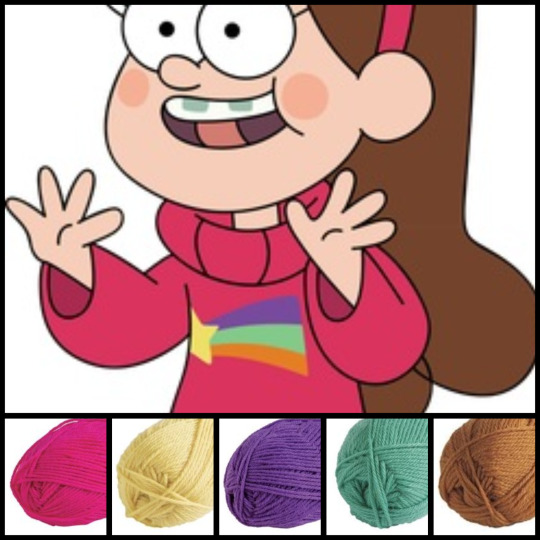
I was very intimidated by the dragonfruit colorway as I don't wear bright colors very often, but it has unlocked a love for pink I didn't know I had! and enough people have told me that it looks good on me that I believe them, now, lol.
the pattern
I wanted a loose-fitting, drop-shoulder, crew neck sweater. I know Mabel's sweaters all have that turtleneck action going on, but I am not comfortable in anything closer than a crew neck. I didn't use a pattern because I can make my own ¯\_(ツ)_/¯ hot take: drop shoulder sweaters are the easiest to grade and any decent designer should be able to have all sizes available. also, as a knitter, you can just knit bigger arm openings if you need bigger sleeves, simple as that.
so, I did some math to figure out how many stitches the body had to be. I divided that in two, for front and back. I decided that there would be one purl stitch on each side for a "faux-seam". I also decided that the neck opening should be a little under a third of the width. so I cast-on for the right shoulder, knit a few rows, put those on hold, did the same for the left shoulder, cast-on my neck stitches in between them, and worked the back until I had reached where the underarm would be. I then put my back stitches on hold and started working on the front. I picked up stitched from the right shoulder and just started to knit, shaping the neckline by trying it on me every few rows until I was satisfied. I put that on hold, mirrored it on the left side, then cast-on stitches in the middle, and knit straight until the front was as long as the back. I then joined everything to work in the round until I was satisfied with the length. so, you know. pretty basic improvised top-down drop-shoulder sleeve construction!
speaking of the sleeves, I picked up stitches with no regard for my row gauge. there were too many, the sleeves were puffy, and I didn't like the look. more on how I fixed them in part 2. aside from that, I opted for decreasing in the round every ten rows or so instead of decreasing under the arm. you can see the decreases on the sleeves a little, but I don't really mind, I like the fit better than if they were triangular.
the shooting star
I made the grid in Stitch Fiddle. I just googled something like "mabel rainbow shooting star sweater" and found an image of the design. I imported it in Stitch Fiddle and ... fiddled ... a bit with it. I figured out how many stitches wide I wanted it to be, and I had to slightly tilt the image so the star wouldn't be too wonky. it would have looked better if I had user a thinner yarn for the sweater, but I think I got a decent result for my gauge.
for the shooting star, I opted for duplicate stitching because I hate intarsia. it took three tries to find the technique that worked best for me and I ended up falling in love with the rhythm of it. for real, I was sad to be done at the end. I worked left-to-right, breaking my yarn for every "line" except the very short ones. here's a pic of the backside, if you're wondering what it looks like.

final thoughts
so yeah, pretty proud of myself on this one. I learned new techniques, I improvised a pattern. it was an exercise in trusting my instincts as I tend to overthink everything I create. it was also a project I knit for fun, for me, without the pressure of writing the pattern or having a deadline. as a bonus, I now have an easy Halloween costume!

#mabel pines#gravity falls#mabel sweater#cosplay knitting#knitters of tumblr#plus size knitter#knitting
387 notes
·
View notes
Text
Imagine Pacho Sends You as a Gift to (Spy on) Amado 3/3
More smut (but I’m really bad at writing it, :////). Plot twist guaranteed. And I can’t believe I wrote 6K for this, FML. What has Chema done to me? I also made a few changes in the first two parts, read the whole thing on AO3.

You are woken by a phone call in the middle of the night. But you neither move nor open your eyes. You hear some numbers, Amado sounds irritated. It could be something related to tonight's dinner?
Your patience is wore out minutes after minute and Amado still hasn't returned to bed. You make a bold decision to wake up, and the Mexican is smoking by the window. Something keeps him up at night? That doesn't sound like the Lord of the Skies, the man who has had the world at his feet.
"You wanna talk, more sex or a bath?" You carefully propose.
"I was expecting for late night snacks you pull with some Asian witch shit." Amado lets you sit on his lap. "Hang on, I've got some leftovers from the kitchen."
You two settle for sharing the jacarandas mochi from a small food container in the bathtub.
"You like it?" You don't really need validation from Amado. It's just you spent hours coming up with the idea of improvisation, trying to make a traditional Japanese dessert more appealing to the Mexican guests. "I made the bean paste from scratch, less sugar. I understand most Mexicans are not used to sweet bean paste..."
"They don't deserve it." Amado suddenly claims. You don't get it. Who are they? "They are just a bunch of pigs in expensive suits, corrupted, stinky pieces of shit." Then Amado tells you almost everything. He invited the tequila exporters with the hope that the cartel could use their affiliate companies in the States as front to launder more drug money since tequila is one of the largest yet least regulated businesses between the US and Mexico. And the politicians are officials from Mexican Customs Bureau and SHCP.
"Fucking idiots. They thought I was gonna ask them to smuggle coke under the tequila crates. With all the fucking Pier 1 sofa and Ford pasenger seat manufacturers in Juárez, I've had more than enough trucks to move products across the border." When Amado brought up money laundering, the tequila exporters expressed concern regarding possible investigation of tax evasion from ATF, putting more pressure on Amado to increase their cut.
They eventually made a deal less favorable to the cartel and that's why Amado's a bit pissed when he's on the phone.
"Why are you telling me this?" For the first time that night, you ask softly.
"Those cabrón. They don't deserve what you bring to the table. You pour your heart and soul, making the best feast I've ever had. You deserve to know what happened."
You've never thought you'd hear that from Amado. He didn't have to tell you anything. It makes you lower your guard. You want to get closer to him, without any agenda.
"Does this mean my body won't be put in the trunk of one of your auto collections tomorrow?" You try to lighten it up.
Amado kisses you from behind. The position is awkward but neither of you care.
Making out with Amado in the bathtub makes the night better than your wettest dream.
The Mexican's gonna make you cum again with those magician hands of his.
"You...haven't told me if you like the jacarandas mochi." You're so screwed. Maybe you'll never get the answer because Amado's too busy sucking you tits.
Amado clears his schedule the next day. He brings you to the Asian boutique where he bought the Japanese painting.
"One of my guys found this place. I thought you might be interested..." That's cute from a drug lord. But you're not that kind of person.
"A) I don't need a Buddha artifact home to find my inner peace, and B) only Pacho wears shirts with Chinese characters taken from a poem back in the Tang Dynasty. Seriously, he's ridiculous. Come on, let's go."
Instead, you two spend the day trying different Asian food you can find in DF. From hotpot to Peking roasted duck, from pho to char kway teow. Amado seems to enjoy the Chinese food more than others.
"Most Asian restaurants in North America are run by the Chinese, from San Francisco to DF. Since you guys can't tell if an Asian cook is from China, Japan, Vietnam or Thailand, he or she would quickly learn dishes from other Asian countries. We are always the most hardworking people." You explain to him.
"Oh, I love hardworking people." He's so full of shit but you can't help smiling.
Amado finds a fortune cookie note saying "Happy New Year of Monkey." Then you explain Monkey is one of the Chinese zodiac signs which repeat every 12 years.
"So 1956...I am a monkey? Cool." He's surprisingly quick with math.
You write the Chinese character of monkey on a napkin and Amado seems fascinated by it. So you suggest that he could get the Chinese character tattooed, "Next time you can show that to Pacho. He probably would get one, too."
Holy shit, he's really doing it.
The way the tattoo parole Amado brings you to is cleared makes you believe it's part of the cartel business, which makes perfect sense.
"You don't have any tattoos? Not at all?" You're surprised when the tattoo artist prepares Amado's skin on his forearm, first cleaning then shaving.
"We've fucked three times, once in a bathtub," Amado grins, obviously in a good mood, "Don't you think it's a bit late to ask? Or I fucked you too hard you didn't notice?"
Thank God the tattoo artist doesn't even flinch.
OK, you have to get back at the fucker. So when the tattoo artist asks you for the character to make a design, you write pig in Chinese instead of monkey.
"Hold on, that doesn't look like what you wrote on the napkin. Let me see it." Right after the tattoo artist places an outline of the design on his skin, the Mexican stops him.
You're 100% sure Amado doesn't speak or write Chinese. How the fuck does he figure it out?
"What is it exactly? Tell me the truth or you will have an honest conversation with my brother." Amado makes the threat more scary by pointing at Vicente, who stands next to the door with two guns and a pink lollipop.
"Wait. He doesn't know shit. It was me...I wrote a different character." Your confession is quick, you don't want to see anyone get hurt over this beef.
You thought it's just a silly prank. Now you realize you're dealing with the most notorious narcos of the country. Amado may look like a businessman, reasonable, even decent. He's still capable of getting violent whenever he thinks it is necessary, to an extent you really don't want to know.
You take a deep breath, then apologize to Amado. You are ready for the consequence.
"Apology accepted. On one condition, you'll have the exact same tattoo as I do when the new design is done." Fair enough.
But you're a chef who often needs to cook right in front of customers. You can't let them see a tattoo on your forearm.
"How about here?" The Mexican is touching your breast as if no one's around.
It's a small tattoo, just one character. But it's near your heart and you're sensitive as fuck.
You can't move but your nipples are hard almost through the entire process. Amado's right beside you and he sees everything. Someone please help you ease the pain FFS.
The fucker doesn't act on it until you get into the car. Amado shuts the soundproof panel between the front and rear seats and the next thing you know, you're riding the man who just makes you get a stupid matching tattoo. It fucking stings, and itchy. Yet the pleasure is undeniable when your tits being teased, bit, sucked. Amado carefully avoids the tattoo, which makes you want him to scratch the itch even more. You scream his name when you cum with both extreme pleasure and pain.
Amado puts an arm around you when it's over. Two matching tattoos are right next to one another. Your heart is still beating fast from the afterglow, echoing his pulse.
You feel the caress on your beast, it hurts a bit yet the body warmth is nice. Is it how it feels to be marked by someone else? Not many people will ever see it, plus it's not a specific name or symbol that would embarrass you later. It'd be a secret.
"You know what? You won't be able to find a dead body to stand in for you when you eventually betray me, sweetheart. No one else would get a tattoo like this."
What Amado just says feels like a kick in the stomach. It's cold and absolutely right. Have you been sloppy? Has Amado figured out something already? "Why would I betray you?" You ask, but he doesn't give an answer.
It's the last day of your stay. You have a very special package delivered from Japan.
You gonna make blowfish sashimi tonight for Amado.
Everyone knows it's toxic so it has to be handled with meticulous care. You make Amado watch every step — a set of fuguhiki, knives with thin blade is unwrapped, you pick them one by one to gut the fish, remove the deadly liver and ovaries, skin it and cut off its head. Then instead of cutting outward like most people do, you turn a knife to cut inward.
"Careful! You shouldn't hold knife like that." Amado almost jumps in to help. But you assure him it's OK. Then you show off the technique to cut extremely thin and translucent slices of blowfish.
To make the white meat more attractive, you set the slices in a large plate with red poppy flower pattern. They are so thin, the poppy flower is still visible when all's done.
"An ancient Chinese writer used to say, 'The taste of blowfish is worthy of death.'" You joke when you mix the sauce. "Don't worry. I'm a licensed blowfish-preparation chef."
Amado squints, "So you're testing me."
You want to tell him to just trust you, but you don't know how.
"There's no antidote for the tetrodotoxin. But I'll eat it, too. If it's poisonous, our muscle will be paralyzed bit by bit when we're fully conscious, eventually we won't be able to breathe. We're going to die slowly, painfully and desperately."
You take the first bite, Amado follows.
"Why are you so loyal to him?" Amado breaks the silence, "For one, you don't sleep with him. You obviously are not related. And as far as I know, money can't buy loyalty."
"I'll answer it if you answer my question first." The Mexican agrees. "You didn't want me for me, you barely knew me. You made the decision when Pacho said I was the best, he wouldn't last a week without me. You want him, or something that makes you his equivalent. Except being gay, I don't know. You won't fuck his boys, so I'm the next proxy. Am I correct?"
After a pause, Amado nods. Then it's your turn.
"How many female chefs do you know?" Amado is confused for a few seconds, then he gets it.
"There was no place for you in your line of work, just like there was no place for him in this game controlled by men, men who have multiple wives and fuck whores. He sees himself in you. So he takes you under his wings."
"Yes. Pacho is the only one who's believed me. He's also the biggest shareholder of my first restaurant."
Amado then asks what you gonna tell Pacho when you return. "I'll tell him you give really good heads. Maybe he should try it himself." You wink, "No, I'll let him know you're not a cold-blooded bastard. Even though you sometimes make awful choice by dipping sashimi in guacamole, you're appreciative of other people's work." You really mean it, you like Amado. But you'll probably never know if he buys it or if it matters.
After a while, you finish the whole plate of blowfish sashimi. "Seems we're not dead." Amado's poking your cheek with chopsticks.
"No, we are not."
"Last question, why did Pacho send you?"
"Amado, you would've done the same. You know that."
48 notes
·
View notes
Text
final evaluation
for our multiverse theme, I was really inspired by the idea of a passageway through time, or a tunnel that links the past and the future. I looked at Viktor & Rolf’s FW 2016 runway, where they used old scraps and rags from their past projects to create their garments, creating an immersive journey through moments in their career. I thought looking at the theme ‘multiverse’ in a more metaphorical, meaningful way was very interesting, so I decided to reference Viktor & Rolf’s time capsule-like garments in my own, by adding scraps and rags of black fabric to represent the ‘chaos’ side of my dress.
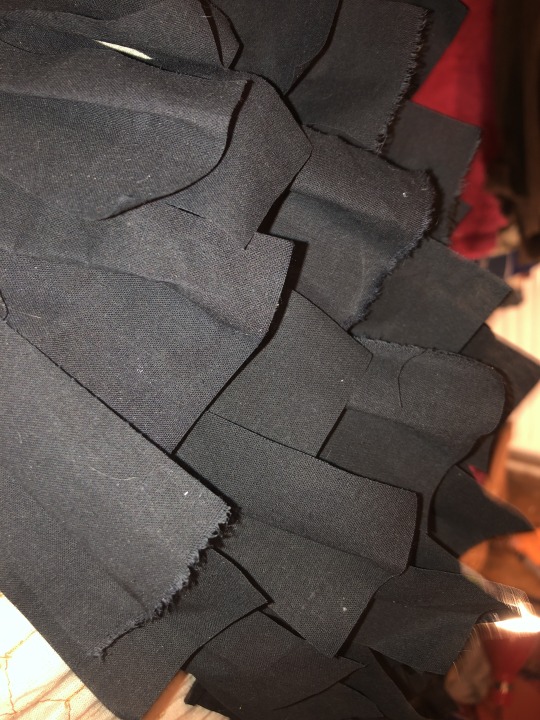
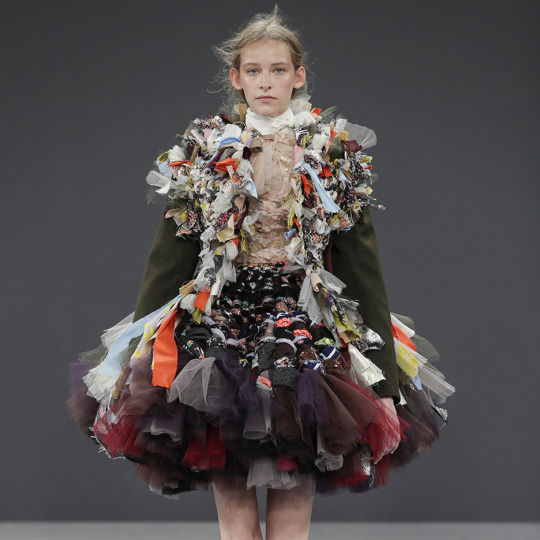
I wanted to make sure my garment didn't fall short for the M.A.R.S (maths, art, religion, science) part of our theme, so I spent a lot of time deciding how I should link it all together. For maths, art, and science I machine-embroidered a geometric block pattern all over the ‘order’ side of the dress, inspired by artist and quilt maker Yoshiko Jinzenji, whose minimalistic, yet detailed quilts communicate order like nothing else. I also wanted the geometric pattern to look like living cells of a plant or animal, with little organelles inside. For the ‘religion’ part of my theme I looked at the ancient Chinese philosophy of Yin and Yang, which is a concept of dualism, where contrasting forces are said to actually be interconnected and complimentary. this also fits in with ‘order & chaos’ because in the real world, order & chaos come as a pair, all order was born out of chaos, and you can never have one, without the other. to communicate the idea of Yin and Yang, I made sure to make opposing sides of my dress black and white, and I made the dividing line waved instead of strait to mimic the Yin and yang symbol.
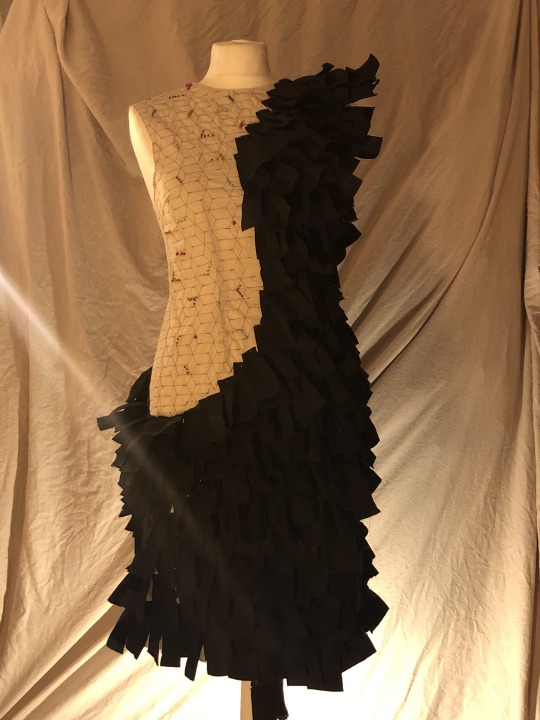
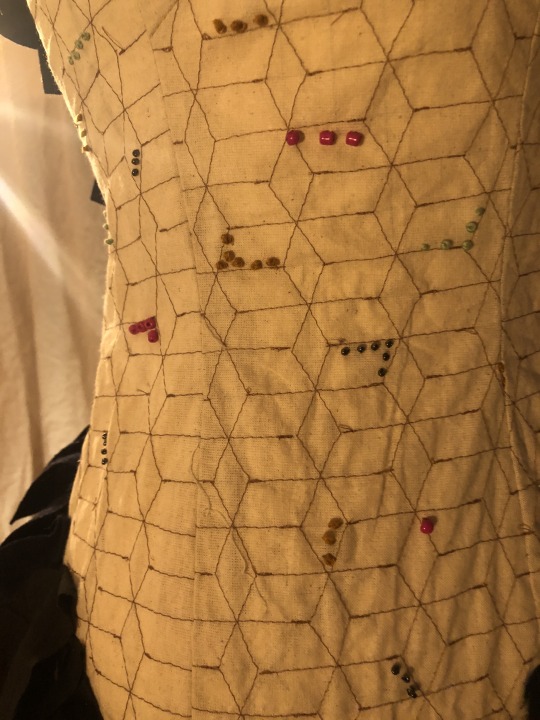
From all the 2D processes that I did in this project, I think doing an artist copy of Jinzenji’s quilt embroidery was the most effective, as it really gave me an idea as to what direction I wanted to go in the the ‘order’ half, and it also features very prominently in my final garment. I also think that the ‘fashion rough’ task really helped me loosen up and stop overthinking my designs and ideas. I had never drawn that many designs at once, and I found it really challenging at first because I wanted every design to be the best, but it made me realise that its all about experimenting, and finding out what works and what doesn't. Drawing out my final design idea was really effective in helping me decide what to do next because seeing a fully conceptualised version of my idea allowed me to go back and refine details and make it even better. some 2D processes that I didn't think were so effective for me were the mathematical grid mirrored designs we did. I didn't like the colours I used, and the lighting gave it a yellow tone which didn't look very clean or professional. It just wasn't where I wanted my final piece to go. I loved my ‘positive and negative space’ paintings, I used gouache paints which are really pigmented and easy to work with, and I spent a lot of time filling in all the details, which I think was worth the effort. they came out really clean, looking almost abstract until you notice what the paintings actually are.

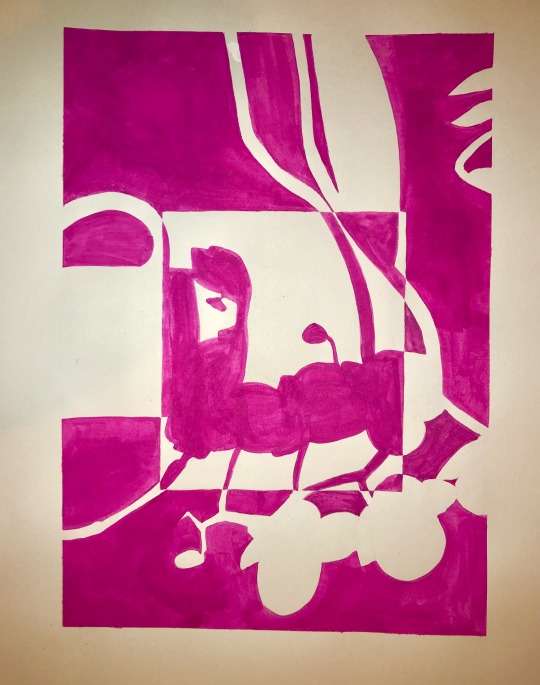
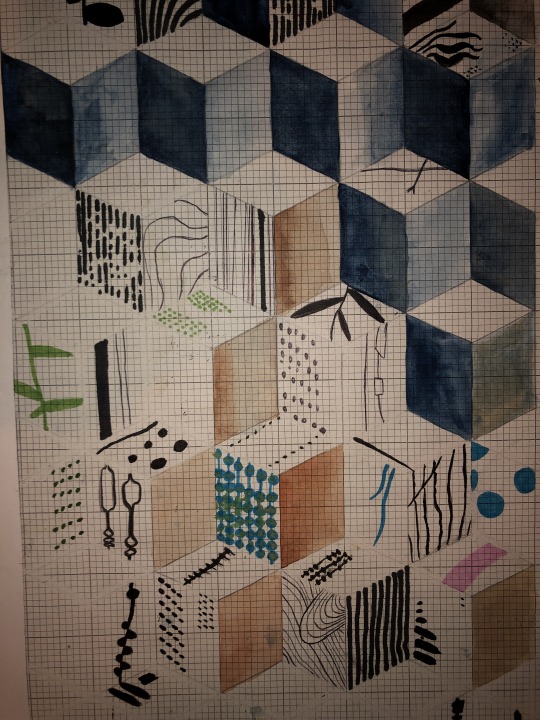
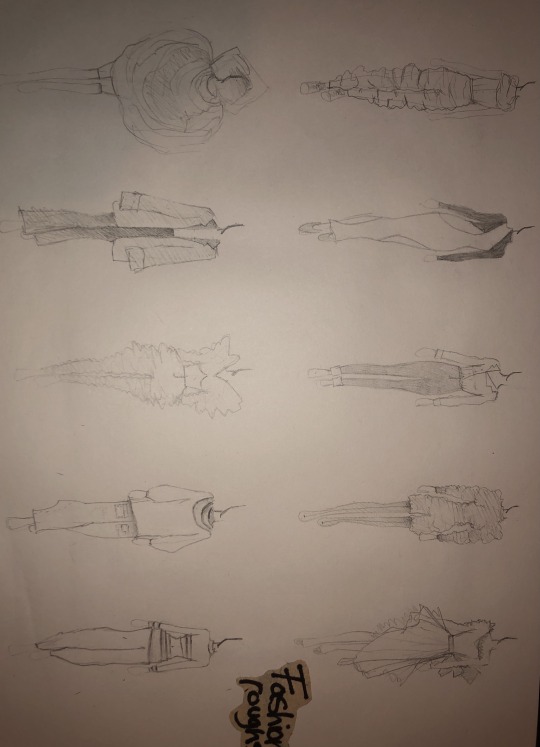
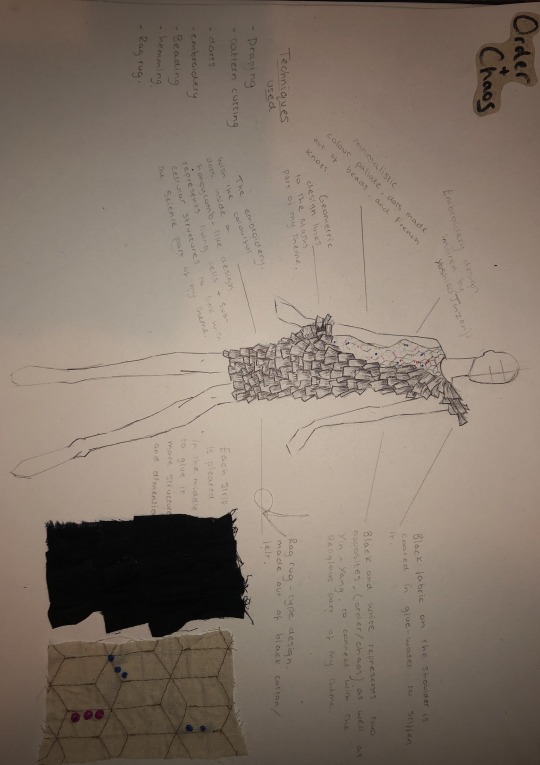
out of all the 3D processes I did in this project, I'd say that draping was the most effective. I had never tried draping before, and a chose to make a very simple dress because I don't have any experience in constructing clothes yet. I really enjoyed draping my garment, because it was really satisfying making the fabric fit the mannequin perfectly, and it was a lot easier than I was expecting. I really enjoyed the whole process of making the dress, like pattern cutting, embroidery, and sewing, my main interest is learning how to construct garments, and although this dress is very simple, I still feel like I've learned a lot. I also love the ‘interstellar wormhole/wearable sculpture’ task I did, i loved the shapes and curves the tights naturally made, I would of loved to have included it in my final piece, but I couldn't work out how to include it in a garment without it getting scrunched up because of the elasticity. Although I like how my pop up constellation turned out, I don't think it was very effective in terms of helping me towards my final piece, as I didn't explore star signs and horoscopes to represent the ‘religion’ part of my theme.
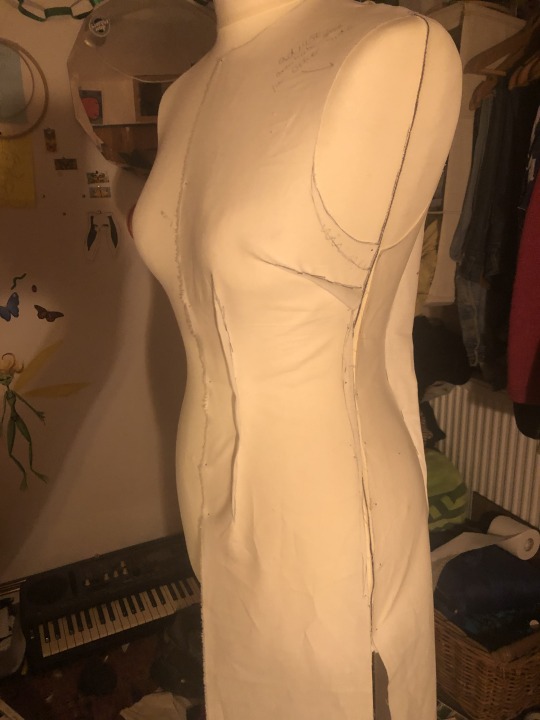
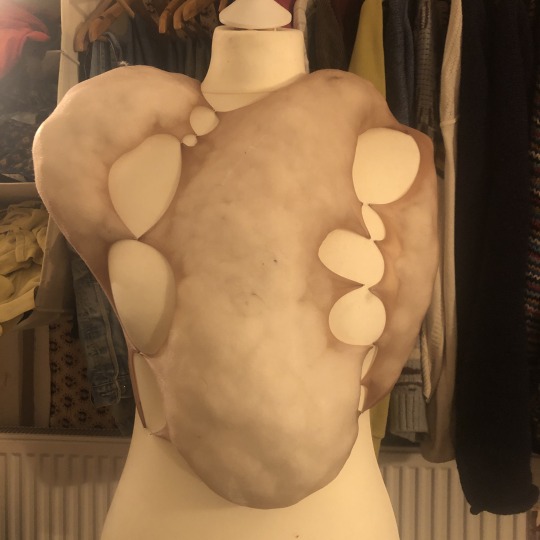
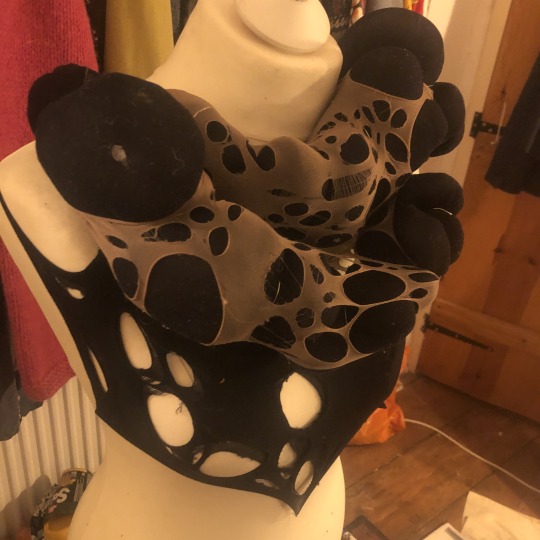
I created a video to show the process of making my final piece from start to finish by making a Tiktok. I wanted to do this because it was an easy way to cut and edit a video quickly, and add music in the background. I wanted a clear story of how the dress was constructed, which I think I achieved. I like the transitions I put into the video, I think it makes the whole process look very seamless (even though it wasn’t) and flow well.
In terms of heath and safety, there wasn't a huge concern because I didn't have access to any serious machinery or tools such as a heat press that could pose a real heath risk, but I still has to consider things such as being careful not to catch my fingers in the sewing machine. To achieve this, I made sure not to use the sewing machine when I was tired or unfocused. I pricked my self a lot with needles and pins, but there was no way I was going to avoid this, especially with the amount of beading I was doing. I also had to make sure not to cut myself with scissors, but at the time I wasn't really thinking about health and safety, its almost second nature.
I faced a lot of limitations while making this dress, especially because of covid. I didn't have any of the materials I needed, so I picked up a bag of supplies that was made for me from college, as well as buying my fabric from amazon. the fabric arrived very late, which meant I had some serious Time restraints. I'm lucky I live right next to the hardware store, I was in and out of there frequently, buying pins, needles, beads, thread, zips etc. I leaned how to drape my dress from YouTube, which meant I did have to have a couple tries before I got it perfect. the most challenging moment was when i realised I spent hours and hours embroidering and beading the wrong panel of my dress, and I had to throw it away.
I really love my final outcome, it looks exactly like the design I drew, and I think its clear that a lot of time and concentration went into creating it. I think I did a really good job of connecting it to all the themes while still sticking to a strong concept. if I were to make it again, I would add more textures and shades of black to the chaos side, I think it would look much better if it wasn't all made out of the same black fabric. I would also add more black strips on the shoulder and hip to give it even more volume. I would also love to have made it on a different mannequin, as my one doesn't have a lot of shape, and with the rag rug design, I had a hard time making the dress keep it’s silhouette.
Ive struggled a lot with time management and organisation while working a home, I find it really hard to say concentrated when I'm surrounded with so many distractions. Its something I need to work on, this was the first time I've had to do a project completely from home, and think it was important for me to see what I'm like working in a home environment so I can see what I need to change for next time. I've always struggled with committing fully to and idea or concept, because a lot of the time I second guess myself and struggle with feeling confident in my skills. this project has taught me not to take things so serious, to improvise, and that it okay for everything not to be 100% perfect.
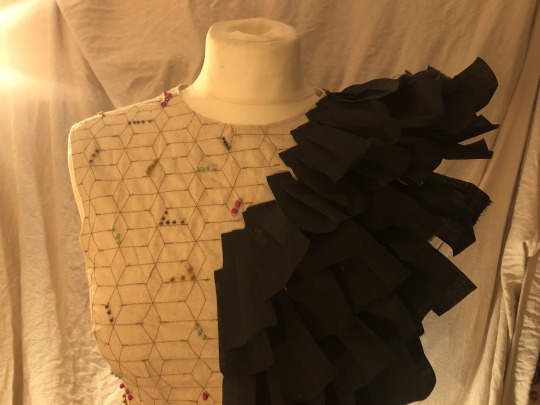

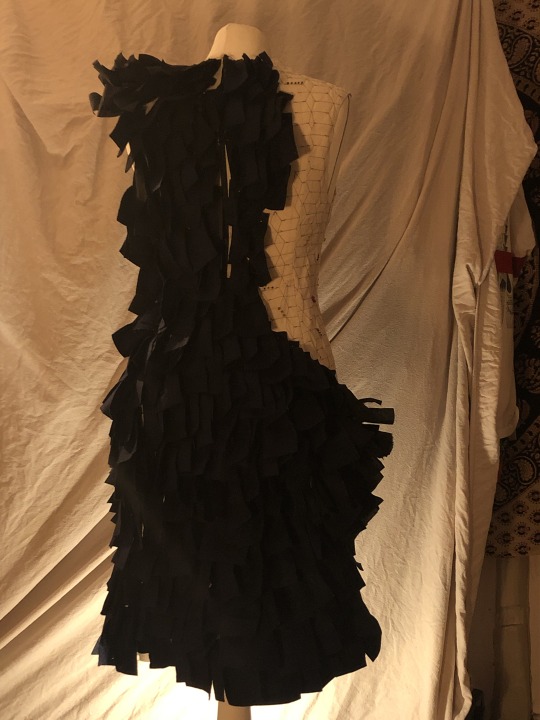
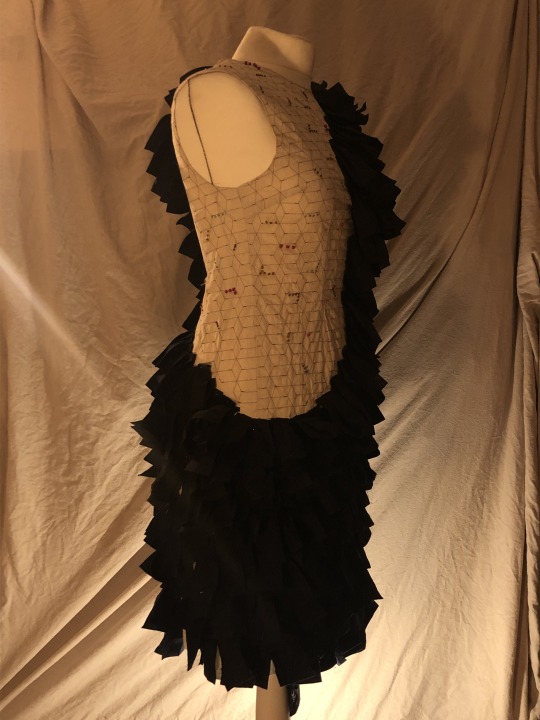
2 notes
·
View notes
Text
Derek Taylor 2019: Keep Going

Two words coupled by Harriet Tubman and coined into a credo essential for negotiating the human condition. It's also the title of and invocation to a sublime duo album by Joe McPhee and Hamid Drake released this year as rejoinder to their first recorded ten-years earlier. Taking stock of that decade is something we at Dusted did recently and as the New Year arrives it’s an exercise that feels all the more important, particularly in the extra-musical sense of recognizing the folly of where we’ve been as a world and where we really want to go moving forward. As always, music is both balm and adhesive in remembering that no matter how divisive and discouraging everything seems, we’re still all in it together.
Joe McPhee
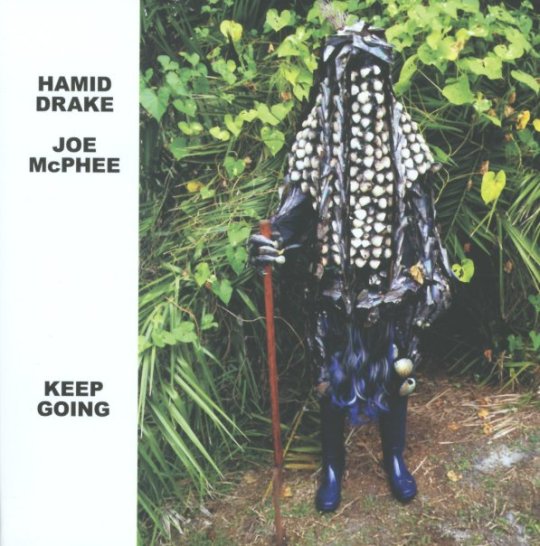
Seventy-nine-years young and still a human dynamo of energy, empathy, and optimism, the Powerhouse from Poughkeepsie’s been a constant of these retrospective essays for as long as I’ve been writing them. I haven’t done a hard count, but his horns grace at least a dozen releases this year. Duos with Mats Gustaffson (Brace for Impact), Fred Lonberg-Holm (No Time Left for Sadness), and Paal Nilssen-Love (Song for the Big Chief) join the dyad denoted above in delivering dialogues as personal as they are potent. Tree Dancing assembles the super-group of Lol Coxhill, Evan Parker, Chris Corsano, and McPhee collectively and in component combinations with bassist John Edwards on board for a culminating cut, while Six Situations realizes a dream of bassist Damon Smith in teaming him with McPhee’s tenor and now dearly departed drummer Alvin Fielder. The Fire Each Time bundles six concerts of McPhee in the company of the DKV Trio from a 2017 tour that took James Baldwin and John Coltrane as lodestones. Saving perhaps the best for last, Invitation to a Dream comingles McPhee’s pocket trumpet and soprano with pedal steel guitarist Susan Alcorn and old confrere Ken Vandermark in a tripart colloquy delivered in crystal clear sound.
Peter Brötzmann

A year younger and another fixture in my yearly firmament, Herr Brötz has always had ears attuned to the early pioneers of improvised music through the unabashed embrace of Sidney Bechet, Coleman Hawkins, and others. Those unerring affections erode some of the surprise from I Surrender Dear, an album of tenor-rendered jazz standards and originals, but also enhance the overall experience in how literally he makes good on the debt. It’s arguably his best solo album since 14 Love Poems and bolstered further by the focus on a single central member of his reed arsenal. Also of note, Fifty Years After commemorating the golden anniversary of Machine Gun with longtime confreres German pianist Alexander von Schlippenbach and Dutch drummer Han Bennink,
Rob Franken Electrification — Functional Stereo Music (678 Records)

Four-hours of Fender Rhodes heaven recorded in elite Dutch studios between 1972 and 1981 that puzzlingly never found commercial circulation until last year as a six-LP series. The 2019 edition transfers the archive to three-CDs and only rarely flags as Franken’s fonky keys front guitar, bass, drums and a revolving cast of fellow aces fielding other instruments. Economy is the informal edict as morsel-sized originals alternate with covers of tunes by Herbie Hancock, Stevie Wonder, Atilla Zoller, and even Steely Dan. The utilitarian intimations of the title aren’t just lip service. Franken originally envisioned the music as an homage to the muzak strains common to “shopping malls, hotels, elevators, department stores, and airports.” Much of it sounds far better aligned with the kinetic cop and detective pot-boilers that populated television and cinema of the decade.
Brian Groder Trio – Luminous Arcs (Latham)

Keeping a working improvising ensemble together is no minor accomplishment, yet Groder’s been able to maintain one in his name with bassist Michael Bisio and drummer Jay Rosen. This disc joins two previous albums in demonstrating both the depth of the musicians’ bonds and their shared zeal in exploring and capitalizing on them. Any novelty surrounding the particulars of a trumpet-led piano-less trio is fortunately long since lapsed. The precedence allows them to marshal their attention to shaping music that is simultaneously the sum and multiplication of the substantial parts.
V/A — Pakistan: Folk and Pop Instrumentals 1966-1976 (Sublime Frequencies)

Seattle-based Sublime Frequencies weathered a stretch where the “weirdness” quotient of their audio excavations appeared to outweigh accompanying scholarship and attention to edifying annotations. This scintillating compilation suffers no such skew in the balance of carefully sourced sounds and accompanying copy to shore up the context. Sixties rock, specifically surf, is a through-line in the preponderance of reverb-riddled guitars and buzzing Farfisa organ on many of the tracks, but indigenous melodies and rhythms are also frequent fodder for enthusiastic appropriation. Best of all, there’s a pervasive sense of fun to the sequencing that makes it a handy soundtrack for soirees of all sorts.
Jaimie Branch — Fly or Die II (International Anthem)
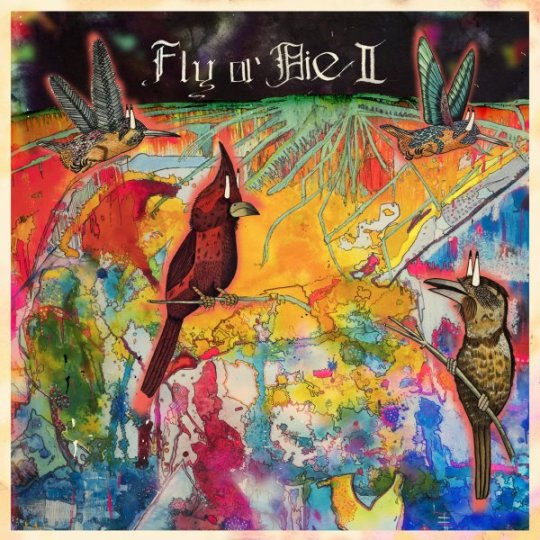
If her ascendant flight pattern is any indication, death, artistic or otherwise, isn’t even an option for Jaimie Branch. This follow-up to her meteoric (and long overdue) 2017 debut builds organically on previous cosmetic aspects (core quartet, cover art, etc.) while making progressive-pronged politics even more prominent. “Prayer for Amerikkka” doesn’t mince words in proffering a platform of resistance and the musical propellant to keep it confidently airborne. A robust touring schedule and well-earned media attention are only furthering Branch’s designs at getting the sounds into as many ears as possible.
Sam Rivers
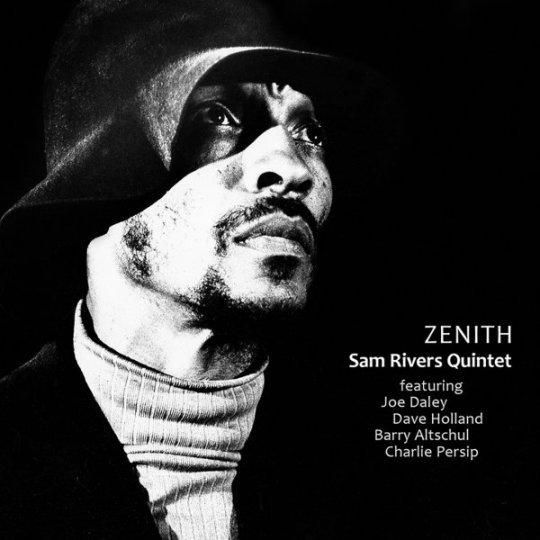
The Sam Rivers Archive Series is the brainchild of producers Danas Mikailionis and Ed Hazell. A projected eight-volume celebration of the music of the eponymous composer/improviser/educator/doyen curated from a vast trove left in the care of Rivers’ daughter after his passing in 2011, it’s also probably the jazz news that most set my heart aflutter with anticipation this year. The initial pair of entries, Emanation and Zenith, certainly live up to the promise in presenting clean fidelity concerts by a high profile trio with bassist Cecil McBee and drummer Norman Conners (pre-disco) and a workshop quintet involving tubaist Joe Daley, bassist Dave Holland and the eight-limbed drums juggernaut of Barry Altschul and Charlie Persip. Both discs are essential.
Jimi Hendrix — Songs for Groovy Children (Experience Hendrix)

Not a long-lost Hendrix kids’ album despite what the jejune title might suggest. Instead, it’s four nearly complete concerts from the guitar deity’s iconic New Year’s Band of Gypsies engagement at the Fillmore East in 1969/70. Producer Eddie Kramer largely quashes his invasive impulses in mastering the tapes, leaving the only real minuses to manifest in the occasionally extra-loose interplay and Jimi’s decision to indulge Buddy Miles’ mic access to a regrettably arguable fault. Math done, there’s nothing stopping an instant trigger-pull for true believers, even folks who have it all already in bootleg form.
Ezz-thetics
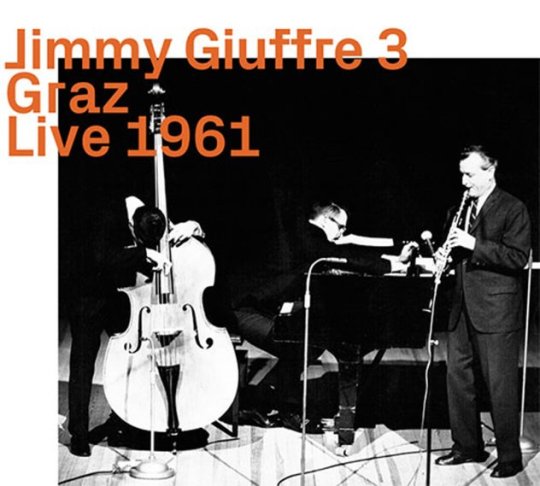
Fingers remain collectively-crossed that Werner X. Uehlingher will one day decide to write an autobiography of his countless adventures as a stalwart producer of improvised music. Ezz-thetics is just the latest chapter in the future tome’s story arc that started with the founding of the Hat Hut label back in 1974. The new imprint, named after a classic George Russell composition, balances reissue and archival releases with new ones, packing them with branding that memorializes the old while consecrating the new. Discs by Jimmy Giuffre (Graz Live 1961), John Coltrane (Impressions Graz 1962), and Albert Ayler (Quartets 1964 Spirits to Ghosts Revisted) are the marquee name highlights, but the entirety of the imprint’s releases to-date have had their merits.
Stephen Riley

The tenorist is no longer my favorite under-forty plier on the instrument simply because he’s aged out of the bracket. Oleo builds on last year’s transparently veiled Sonny Rollins’ tribute Hold ‘Em Joe by adding the sturdy trumpet of Joe Magnarelli to the equation and turning the referential calendar forward to the saxophone colossus’ collaborations with Don Cherry. It’s a beaut from a brisk beginning sortie on “Ornithology” to lengthy slalom on the Ducal “Don’t Get Around Much Anymore.” Tangerine Rhapsody is technically under Dutch drummer Snorre Kirk’s leadership, but it wouldn’t be nearly the album it is absent Riley’s supple and sagacious involvement.
Milt Buckner & Jo Jones — Buck & Jo (Fremeaux & Associates)

Curious about what makes an individual improviser tick? Duo contexts are arguably the best aperture to gain edification and insight. Even better than solo or ensemble configurations, the dyad distills things down to solo and dialogue. This four-disc, four-hour-plus collection is a remarkable case in point and surprise that it even exists at all given its vintage let alone its scope. Thank French impresarios the Panassie Brothers who invited ur swing organist and ur swing drummer to indulge themselves with only the gentlest of producer-dictated strictures. The results are fascinating, whimsical, bombastic, and above all, endlessly entertaining. An epitome of intimately undertaken jazz tête-à-tête before it was anything resembling a regular thing.
Del Shannon — Two Silhouettes (Bear Family)
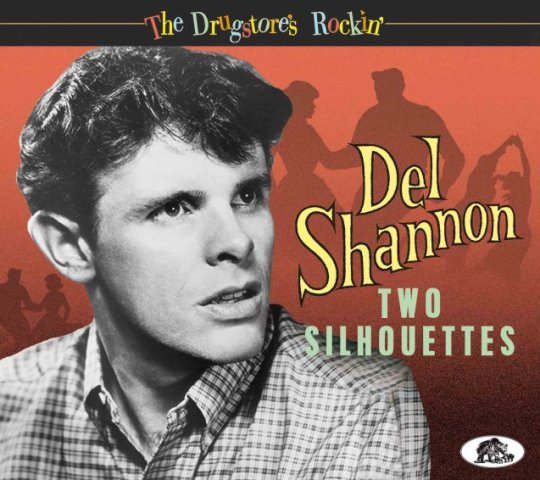
Preconceptions can prove obdurate edifices. Prior to my forty-eighth birthday this year I dismissed Del Shannon as one of the disposable princes of bubble gum pop on the rare occasions he entered my consciousness at all. “Runaway” remains an influential song, particularly in its use of musitron organ, but it’s hardly the makings of unassailable genius. Bear Family’s exhaustive single-disc survey levies a much more convincing appeal for the crooner’s embodiment of a nexus of odd congruencies as moonlighting jazzmen conspire with duck-tailed rockers and barbershop harmonists. Dennis Coffey and Hargus “Pig” Robbins show up as sidemen and there’s even an S&M-tinged canticle called “Torture” replete with whip cracks and a Greek chorus of moans, leaving one to wonder what Ward and June Cleaver made of it all?
Sun Ra
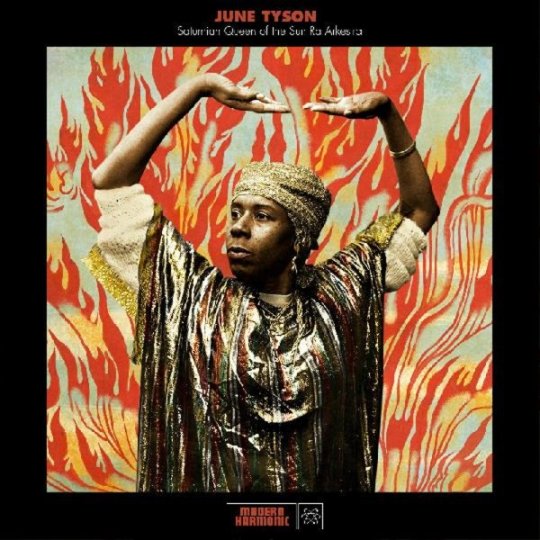
Cosmic Myth and Modern Harmonic continue to advance the mantle apparently abandoned by the Art Yard label in keeping Ra-related albums in circulation. The erstwhile Mr. Mystery employed numerous vocalists throughout his career, even contributing his own less-than-stellar (pun intended) pipes to the cause on occasion. None among that eclectic number could match June Tyson, who brought joie de vivre to the lyrical manifestations of Ra’s cosmic-afro-centrism that was at once wholly believable and infectious. Saturnian Queen of the Sun Ra Arkestra does right by her memory by culling an hour’s worth of highlights from a vast and varied recorded archive. Monorails & Satellites (now in three volumes!) and newly minted editions of Pathways to Unknown Worlds and When Angels Speak of Love were also welcome arrivals.
Derek Bailey/Han Bennink/Evan Parker — Topographie Parisienne: Dunois, April 3rd, 1981 (Fou)
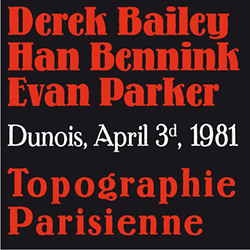
The Topography of the Lungs trio in concert and at length with decent sound eleven-years after their initial seismic contributions to free improv. Bailey and Parker weren’t yet at irreconcilable loggerheads but there’s still a galvanizing and palpable tension that suffuses their interplay. Bennink can’t help being anything but Bennink, bashing away one moment and pattering at barely a whisper the next while keeping ears cocked with split-second focus to the contributions his compatriots. Duos combine with solos from Parker sweeten and season an already delicious aural pot.
Fred Anderson Quartet — Live at the Velvet Lounge Volume V (FPE)
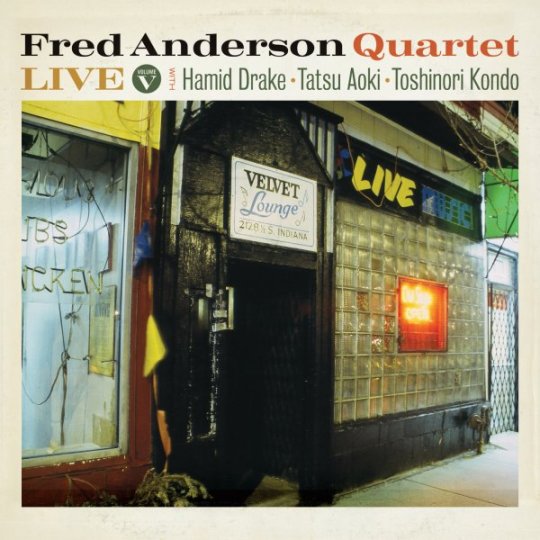
Leftfield guest Toshinori Kondo and drummer Hamid Drake were one half of Peter Brötzmann’s Die Like a Dog outfit when this 1994 concert was committed to tape. That take-no-prisoners context allowed his plangent, frenetic, effects-saturated brass free and ferocious rein. Anderson’s outlets didn’t usually involve electronics and its instructive hearing the adaptations to the roiling controlled-chaos within his customary cerulean-hued improvisations. Drake and bassist Tastu Aoki maintain a stout terrestrial tether enlivened by a revolving array of undulating grooves. Extra points earned for incorporating the original Velvet Lounge wallpaper scheme into the production design. Bottom line: I miss Fred.
V/A — Hillbillies in Hell: Tribulations: Country Music’s Tormented Testament (1952-1974) (The Omni Recording Corporation)

Amusing alliterative appellation aside, this series has managed the no-meager-feat of avoiding diminishing returns while mining the same expanse of time over successive volumes. The fifth entry tilts the lens even more sharply toward the sort of fervent tent show revival circuit favored by fictional religious reprobates like Rev. Harry Powell and Elmer Gantry and comes up with a bonanza off-kilter cuts from names both famous (Hank Williams, Louvin Bros., Tex Ritter) and arcane (The Burton Family, Durwood Daily, The Sunshine Boys Quartet). Ernest Tubb’s “Saturday Satan, Sunday Saint” persuasively sums up the ecumenical ethos, but every song exudes its share of sinful charms.
V/A — Sacred Sounds: Dave Hamilton’s Raw Detroit Gospel (Ace)

As a both prolific and preternaturally talented producer, Dave Hamilton’s usual purview was left-of-center soul and funk. Urban (but not urbane) gospel offered a less-publicized commercial side outlet and he brought comparable emphasis on authenticity and creativity to the various acts he championed. This compilation comprises all-killer-no-filler assemblage that lives up to the unvarnished signifier in the title. It’s nearly eighty-minutes of jangly guitars, tambourines, and impassioned sanctifying and proselytizing of all sorts, as suited for Sunday morning as Friday or Saturday night depending on the preferred mood of your personal household. I’ve enjoyed equal fun plying it in both.
Art Pepper — Promise Kept
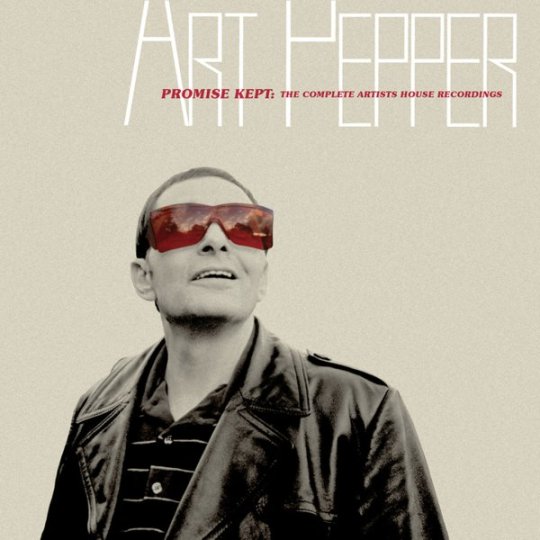
Laurie Pepper, like Sue Mingus and other jazz widows before her, remains a passionate arbiter and steward of her late husband’s recorded legacy. The title of this box set collecting a singular tributary of Art Pepper’s later career aspirations could just as easily serve as a signifier of that bond. In truth, it’s reflective of a pact the couple made with producer John Snyder and a string of studio sessions largely left unissued during the Pepper’s lifetime. Rivalries real and imagined are revealed across the recordings as the altoist wrestles with his insecurities and the realities of choices made and paid for as a consequence of his addictions and fictions. Straightforward and vital, the music avoids gestalt in remaining consistently strong and emotionally true.
Paul Bley/Gary Peacock/Paul Motian — When Will the Blues Leave (ECM)

The prevailing mystery behind this twenty-year-old concert rests on the reason(s) why the fine folks at ECM left it in the can for so long. I don’t have an answer but rather a simple expression of gratitude that they finally decided to rectify the error and get the sounds out into the world. Bley, Peacock and Motian were already three-decades deep in the periodic associations that quietly helped open chamber jazz to free improvisation when they took to the Swiss stage. The ensuing masterful performance manages to feel simultaneously like three old friends shooting the shit and a trio of improvisatory experts operating at peak collective capacity.
Prince — 1999 (Warner)
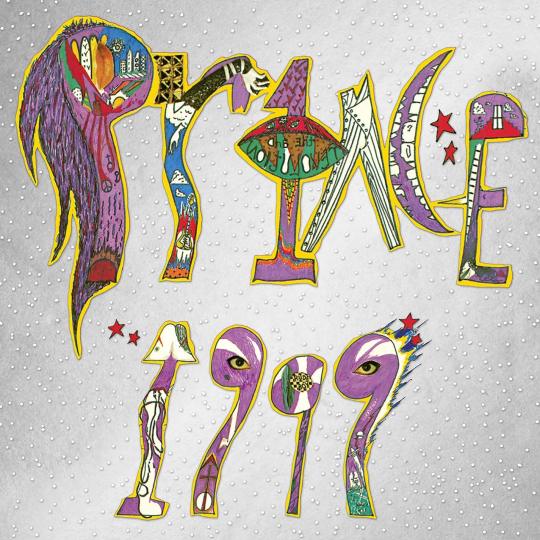
Residency in the Twin Cities for the better part of two decades has resulted in many boons, personal and vocational for this writer. As with any life lived, the red side of the ledger has entries, too. Folded among them is the frictional, frayed listening relationship I harbor with the region’s most famous musical export. Nearly three years after his premature passing Prince is still everywhere and everything here. That perpetual, and perpetually irksome, ubiquity is what makes this five-disc+DVD beyond-exhaustive box so refreshing to my patience-tested purview. It contains lots of impressive material from arguably his most creative and questing period. It also has plenty of songs that feel competent but quotidian by comparison. That blend of bliss and banality is as effective a corrective as I can think of to the cult of purple sainthood that persists around these parts.
And as is my habitual wont, 25 more in no hierarchical order… thank you for reading and Feliz Año Nuevo!
Josh Abrams Natural Information Society (Eremite)
Michael Formanek’s Very Practical Trio – Even Better (Intakt)
Charles Gayle/John Edwards/Mark Sanders – Seasons Changing (Otokroku)
Dudu Pukwana/Han Bennink/Misha Mengelberg – Yi Yole (ICP/Corbett vs. Dempsey)
Nat King Cole – Hittin’ the Ramp: The Early Years (1936-1945) (Resonance)
Willem Breuker & Han Bennink – New Acoustic Swing Duo (ICP/Corbett vs. Dempsey)
Whit Dickey & Kirk Knuffke – Drone Dream (No Business)
Mark Turner & Gary Foster – Mark Turner Meets Gary Foster (Capri)
J.C. Heard & Bill Perkins Quintet – Live at the Lighthouse 1964 (Fresh Sound)
Stan Getz – Getz at the Gate: November 26, 1961 (Verve)
Rita Moss - Queen Moss 1951-1959 (Fresh Sound)
Bill Frisell & Thomas Morgan – Epistrophy (ECM)
Marion Brown & Dave Burrell – Live at the Black Musicians’ Conference, 1981 (No Business)
Jon Irabagon – Invisible Horizon (Irrabagast)
Tom Rainey Trio – Combobulated (Intakt)
Joe Lovano & Enrico Rava Quintet – Roma (ECM)
Tomeka Reid Quartet – Old New (Cuneiform)
Johnny Griffin & Eddie “Lockjaw” Davis – Ow: Live at the Penthouse (Reel to Reel)
Takahashi Miyasaka – Animals Garden (Kojima/BBE)
Tiger Trio (Joelle Leandre/Myra Melford/Nicole Mitchell) – Map of Liberation (Rogue Art)
V/A – Jambu: E Os Miticos Sons da Amazonia (Analog Africa)
V/A – Put the Whole Armour On: Female Black Gospel 1940s/1950s (Gospel Friend)
V/A –Alefa Madagascar: Salegy, Soukous, & Soul from the Red Island (Strut)
Horace Tapscott with the Pan Afrikan Peoples Arkestra and the Great Voice of UGMAA - Why Don’t You Listen? Live at LACMA 1998 (Dark Tree)
Duster – Capsule Losing Contact (Numero)
#dusted magazine#yearend 2019#derek taylor#joe mcphee#peter brotzmann#rob franken electrification#brian groder trio#pakistan folk and pop instrumentals#jaimie branch#sam rivers#jimi hendrix#ezz-thetics#stephen riley#milton buckner#jo jones#del shannon#sun ra#derek bailey#han bennink#evan parker#fred anderson quartet#hillbillies in hell#Sacred Sounds: Dave Hamilton’s Raw Detroit Gospel#paul bley#gary peacock#paul motian#prince
10 notes
·
View notes
Text
Bechloe - Variety Show
HS AU Bechloe where Beca and Jesse are fans of Bo Burnham. It’ll be a 4-parter going through each year of the Variety Show their school holds. This one is mainly Beca and Jesse BROTP with a hint of Bechloe.
----
Freshman Year
“Aw come on Becaw it’ll be fun!”
Beca did her signature eye-roll towards her friend, looking straight into his puppy-dog eyes with a glare; Jesse always did have the appearance of a kicked poodle. ��No dude, fuck off with it already… I’m not performing in the variety show with you!” She smacks Jesse lightly with her pencil, although it did cause him to wince, and continues on with her mathematics homework - surprisingly one of her favorite subjects. Jesse lets out a sigh and continues on with his own math homework, the duo laying down on the hardwood floors of Beca’s house.
As she shuts the rings in her math binder, Beca still feels two small holes, drilling into the top of her head. The brunette glances up and sees Jesse, quickly lowering his head down and refocuses his mind on the math problem in front of him; the male always did have trouble with factoring. The brunette shakes her head and rummages through her backpack, pulling out her English binder - her least favorite subject.
She never could focus during her English class even if it was right after lunch. Her teacher’s voice is incredibly monotone and robot-like, Beca constantly has to force her head up throughout the long lecture. The lack of decorations in the classroom contributed to the lack of exuberance amongst the class and the teacher didn’t seem to care. Unluckily for Beca, her father had forced her to partake in the Honors English class rather than the regular, one of the many cons of having a Literature Professor as your parent. For an honors class, the teacher seemed to lack the enthusiasm and ability to care.
If there was one thing Beca did care for in English class, it would be the redhead that sits diagonally from her. She would be the main energy source of the class - Beca presumes that English is her favorite subject - and would participate nearly every day. For 14-year-old usually oblivious Beca, she was surprisingly quite aware of how her stomach became a butterfly cage when the redhead would say hi to her or how her mouth went dry during group work and how her hands would become clammier. Some days, Chloe - Beca peered over at the redhead’s binder second day of school to learn her name - would shoot a smile at Beca whenever the brunette got caught dazing off in class. There were other days where Chloe offered Beca water or even gummy worms to keep her energy up - how did this girl not have cavities? I guess you could say Beca has a crush on Chloe but the brunette denies any part of it.
The brunette continues working on her worksheet about rhetoric terminologies when she hears a rustle come from Jesse. She glances up and notices he’s pulling out a blue pill speaker Beca had gifted him for his birthday and his narrowing of eyes as he selects music. The brunette couldn’t help but sing along to the song chosen.
I am the left brain I am the left brain
I work really hard till my inevitable death brain
You got a job to do you better do it right in the right way with the left brain’s might…
Beca is startled when Jesse enters in with the next part; the brunette admits, Jesse did have a nice voice.
I like Oreos and pu- puppies! (“Nice censorship there.”) yes in that order!
And I cried for at least an hour after watching Toy Story 3… WOODY!
I am the right brain~ I have feelings
I’m a little all over the place but I’m lustful trustful and I’m looking for somebody to love
….do do do do do do
Beca playfully rolls her eyes once again at Jesse’s hilarious attempt at censorship as she answers a question about the definitions of ethos, pathos, and logos. She continues singing along to the song when Jesse pokes the top of her head. “Come on Beca, we have amazing voices! We can perform this for the variety show together.” The brunette’s face went pale as she sat up, her jaw slightly dropping.
“That’s a lot of censorship we have to do there Swanson…” Beca states, knowing how many dirty jokes there are within the song, but it would be fun to perform it she has to admit.
“We’ll work on that! You can like do the instrumental since you have that program and we can change the lyrics together.” Beca ponders and narrows her eyes slightly. “Please Becsss!” Jesse drones, clamping his hands together while shaking them. The brunette lets out a sigh.
“Fine.”
Jesse lets out a deafening cheer as he works out the details of what would happen with their performance. Beca was surprised at his planning and organization skills, considering the 14-year-old can’t even locate his pencil case and listens to her friend’s ideas. The brunette would be taking the part of “Left Brain” of course and Jesse “Right Brain.” Beca would organize the instrumental behind the song and voice the beginning part. To settle who would be playing “Bo,” they settled with Benji who is a mutual friend of the duo - he enjoys performing on stage. Their outfits with just be Beca in blue and Jesse in red, inspiration taken off of the lighting Bo Burnham - writer and singer of the song - from his show.
“Honestly, thank god you said yes. I signed us up before telling you.”
“Oh, I mea- wait you did what!”
---
The day before the Variety Show, Beca’s English class held a party to celebrate the end of the school semester. The brunette sat in her desk, she didn’t have friends in the class other than Chloe - the redhead was in the stage between acquaintance and friend. She scrolled through her phone, listening to a Bo Burnham playlist she had created back in seventh grade. As she chucks a brownie into her mouth, she feels a slight tap on her left ear. She looks and notices it’s Chloe, smiling brightly at Beca. The brunette widens her eyes slightly as she pulls her earbuds out. “I heard you’re in the Variety show Becs.”
Beca goes red as she rubs the back of her neck. “Oh, uh yeah. Jesse, he’s my friend, made me do it.” She puts a chip in her mouth, only worsening her dry mouth situation.
“I know him, he’s in my Biology class! He’s really nice and funny.” Beca could feel a bitter taste in her mouth as she slightly pouts. “I probably taught him all the humor he knows y’know.” The brunette bites her lip, was she jealous? “I- I’m sorry, I don’t know why I said that…” Chloe only smiles politely at Beca
“Nah, you’re alright Becs…” There’s dead air between them for a while. “Can I listen to your music? Don’t really have anyone else here to be with and I wanna hang out more with you.”
Beca feels slightly touched and offers the left earbud to Chloe. The redhead smiles when she inserts the device in her ear and suddenly, Beca remembers she’s listening to “Eff” by Bo Burnham. Chloe gives Beca a shocked look as the brunette grimaces “Aw don’t be nervous Becs, it’s actually really good… who is this guy?”
Chloe scoots her chair closer to Beca as they both eat a platter of junk food and talk about Bo Burnham. Lucky for Beca, Chloe seems to enjoy his music and sense of humor. The two don’t notice the spreading blush on each other’s faces.
---
Of all of the places their performance could be in, Beca and her group had to be last. Last of all places! Expectations are already high and the brunette is nervous seeing that right before them was a comedy bit by a hilarious girl in their grade who goes by Fat Amy. Beca begins to pick at her nails as she sees the host walk on stage.
“Oh my god, I’m dying! That was so hilarious. Thank you, Fat Amy, for her wonderful stand-up and also stories of crocodile wrestling.” He clears his throat. “Now, give it up for Beca Mitchell, Jesse Swanson, and Benjamin Applebaum who will be performing Left Brain, Right Brain by Bo Burnham! The final act of tonight… good luck you three!”
Beca gulps as Jesse rushes to the right side of the stage as Benji goes on, starting off with a pretend magic trick. The audience laughs as Benji releases a fake dove that plops onto the ground, the brunette smiles as she nervously tugs on her blue-collared long sleeve. Then, she hears her voice.
Hello, Patient 24602. How are you feeling?
Benji goes back and forth with Beca’s pre-recorded voice, quietly laughing at her friend’s improvisation with the dialogue. To her surprise, the audience is slowly erupting with quiet giggles and laughter as well!
“Real mature of you disembodied voice, calling me a loser.”
I was just joking you dumbass. (Thank God for the principal who allowed cuss words for this performance)
Beca stops her giggling fit when she hears the song is slowly approaching her cue. She glances across the stage and makes eye contact with Jesse. He gives Beca a thumbs up and the brunette smiles widely at him.
Splitting your neurological functions in 3, 2, 1.
The lights go out as Benji runs off stage, pretending to scream in pain. When the lights go off, Beca emerges from the side of the stage and stands with arms folded across her chest, standing tall and straight, appearing to be confident. The lights go on as her own voice introduces herself
This is Benji’s left brain, objective, logical, cold, analytical, aware of patterns, aware of trends. He’s efficient... and a prick.
The way Beca raises her hands gives the implication of the middle finger about to be raised. Then, the lights go off, causing the audience to erupt with laughter once more. The laid-back and steady beat transforms into a lively keyboard melody as the spotlight focuses on Jesse who is jumping with joy. This is Benji’s right brain. Subjective, creative, sensory, aware of feelings, aware of people. He’s emotional. And an idiot. He skips around himself and waves excitedly at the audience, pretending to be hurt by the last part of Beca’s voice.
Alright, you two.
All of the light appears on stage as Beca darts her head towards Jesse and vice versa.
Play nice.
Beca starts singing the first verse, making calm collected hand gestures towards herself as the focus of the light is directed on her. She appears to be extremely less bouncy and excited compared to Jesse’s character - or just himself if we’re being honest here - and yet on the inside, her heart is pumping dramatically. Just about when finishes her verse, she catches the eye of a specific audience member, Chloe Beale who is grinning brightly and raised her shoulders playfully when she noticed Beca staring right at her. The brunette fights back a smile when the lively keyboard melody begins once again, the focus of light on Jesse this time.
The light is now everywhere on stage, focusing on both Jesse and Beca. The audience begins to die down from laughter after a little bit between the friends, revolving around the right brain teasing the left brain about playing with Rubix Cubes.
Well, at least I did my freakin’ job, alright? I kept him working, I kept him productive. You were supposed to look after him, you were supposed to keep him emotionally stable for all this.
The audience is silent as Beca pretends to be furious with Jesse. The brunette is throwing her hands up frustratedly as the taller of the two appears to be on the verge of tears.
Now you’re trying to blame me for how he’s feeling, how he’s feeling! If he’s feeling unhappy it’s because you failed him!
Beca pushes Jesse once, causing him to fall on the ground.
You did this to him he hates you I know he does! He freakin’ hates you!
Jesse begins bawling over-dramatically as the audience lets out a collective chuckle by the male’s performance.
Beca pretends to feel bad and kneels down to Jesse, singing the next part of the song. The Left Brain apologizes to the right brain as she holds her hand out and helps the male stand up. Left Brain suggests an idea of how the two can work together, Beca playfully pushes Jesse’s shoulder.
Do you know what it is? JUGGLING! WE CAN JUGGLE AND JUGGLE OUR CARES AWAY.
The audience cackles as Beca looks towards an excited Jesse who is jumping in place, dumbfounded. The brunette rubs the bridge of her nose and lets out a sigh of frustration.
It- it was comedy. We can do comedy together.
Beca’s pre-recorded voice appears once again, stating the reassembly of the two halves of Benji’s brain.
Left brain! Left brain I love you!
Beca says with a blank slate on her face. I know.
The lights go out once again with only Benji reappearing on stage once Beca’s pre-recorded voice says the final line. The crowd cheers and hoots for the group and Beca and Jesse emerge from the wings, bowing and bowing when the crowd cheers them on. They eventually make their way down as the host concludes the Variety Show with a couple of school-related announcements.
Out of Beca’s peripheral vision, she notices a patient redhead, looking at the brunette. She turns to Jesse’s parents and excuses herself, walking over to Chloe. Beca smiles as she tugs on the black necktie she wore for the performance, swaying side to side.
“Becs that was amazing! I didn’t know you can sing so well.” Chloe reaches out to grab Beca’s hand, the brunette notices and gulps a bit loudly, hoping Chloe didn’t hear. The brunette lets out a nervous chuckle and shrugs.”You also look pretty c-cute with that whole tie and collared polo thing...”
“I- I guess. I mean, I don’t sing really often…” Their hands pull away, Chloe still smiling as bright as ever. “Thank you by the way… Jesse gave me it.”
“Well, you look and performed great!” A voice abruptly calls Chloe from the entrance of the auditorium. The redhead snaps her head back towards Beca. “Well, I hope to hang out with you more Becs!” Chloe wraps her arms around the brunette, nearly causing the two to tumble over. The redhead pulls away and winks at Beca. “See you around!”
As the brunette walks back towards Jesse with an astonished expression and a great blush on her face, Chloe walks over to her best friends Aubrey and Stacie who have their eyebrows raised to their hairline. “I thought you didn’t like her?” Stacie asks, waggling her eyebrows
Chloe rolls her eyes and leads the two to her parent’s car. “Well, maybe I do now… hopefully, she does the Variety Show again next year.” The redhead plugs in her earbuds into the audio jack of her phone as she slides into the black leather seats of her mother’s car. “She did pretty great.”
Chloe’s mother begins the drive to a nearby restaurant as the redhead hits a familiar playlist from the day before, it was labeled “Bo Burnham Shit.” A smile washes over 14-year-old Chloe’s face as she imagines Beca singing along to the songs.
20 notes
·
View notes
Text
Scandinavian Spring, November 2018
I set my eyes on Laine issue #5 when I was visiting a yarn store in Copenhagen last summer, and this cardigan was so beautiful I knew I would make it someday. I was (and still am) always drawn to complex things, and whilst this piece wasn’t difficult, it certainly looked polished and delicate.
(The model’s smile and her pretty lace shirt might have helped, too—I should’ve known better, but who could resist?)
I had never knitted a garment with set-in sleeves before, and the design of this cardigan was sophisticated enough to present an exciting challenge as I learnt about how a knitted garment was supposed to fit on my body.
I have heard about the simplicity of Nordic knitting patterns on podcasts, and this certainly seemed to be reflected by the pattern instruction for this cardigan. At first I was confused by directions that told me to cast on or cast off, but not in which method. I knew enough to know that there were different methods, but not nearly enough to know which one was suitable, let alone which one I preferred. I am not complaining though—it was a research process as well as a joy to knit up this garment, which is exactly what I love both in work and in my hobbies.
The main pattern is lovely yet surprisingly simple. I could almost hear my maths teacher call it an elegant solution, and I fully agree. The cooperation of wool, alpaca, and mohair makes it light and fluffy like candy floss. A cardigan for a special occasion, certainly.

Pattern
Scandinavian Spring by Sus Gepard. A very relaxing pattern once I figured out the technical details concerning the edges. I spent about a month in late autumn last year knitting it. Every day I would do my BMAT practice questions in the afternoon, and then work on this cardigan for about two hours in the evening, before moving on to more science-related reading.

Yarn
Edge: Isager Alpaca 2 Eco #E0. 11g/55m.
Mohair lace: Rowan Kidsilk #634 Cream. 74g/618m.
Background colour: Isager Alpaca 2 #Sky. 60g/300m. This colour is so beautiful. It is a greyish purple, with red, blue, and yellow fibres. It has such depth that I feel I didn’t do it justice by placing it at the background.
The measurements include the amount of yarn used for a small piece of swatch.
The remaining yarns are weighed when I finished the cardigan last year. However, recently I cut off four pattern repeats of each sleeve respectively to shorten the sleeves (see modification), so the actual meterage of the mohair yarn and the background yarn should be a little bit less.
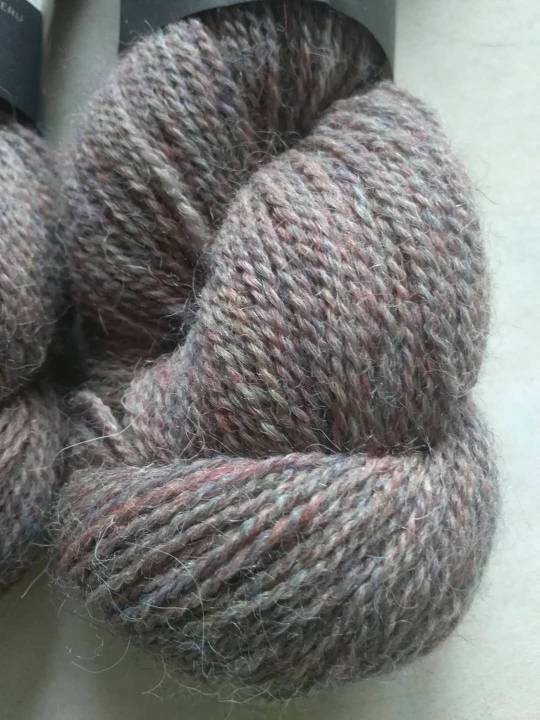
(Sky: see all those pretty colours?)
Modification
My gauge was different than what the pattern asked for stitch-wise. I got 24sts per 9cm, which was 1cm shorter than the standard. I casted on four more sts for the back and two more sts for each front piece. Row-wise I was fine.
I used 2.75mm and 3.5mm needles as suggested. The newly knitted cuffs were done with a 2.50mm needle, but 2.75mm should also be fine. I did have to knit very loosely, especially with the larger needle, to get close to the gauge. I used a 3.75mm needle for the purl row between ribbing and main body just so the edge wouldn’t curl up.
I knitted the body pieces flat, and sleeves in magic loop. In hindsight, I could’ve knitted the bodice in one piece up until the armseye, and worked separately from there.
Cast on and cast off: Italian 1*1 rib cast on and 1*1 rib cast off. Some instructions for Italian 1*1 rib cast off says to leave a tail that’s three times the length of the finished border. I think two and a half is sufficient.
For the bottom edge of the cardigan, since 1*1 rib cast on requires two additional stabilising rows, I used the second stabilising row as the first rib pattern row in the pattern. Then after this I worked 5 more so that the last row of ribbing would be worked on the right side.
When the pattern stated ‘every X row’, I interpreted it to be the last row of every group of X rows. It seem to be the right guess.
When casting off for armseye: I did it on the 1st row (RS) of the 14th pattern repeat. Cast off for shoulder from 5th row (RS) of the 25th pattern repeat. I knitted 26 pattern repeats in total for each piece.
When decreasing for neckline in the front, I began at 7th row of 15th repeat, and dec at every 3rd and 7th rows, 23 decs in total.
The pattern instructed to dec for armseye at the very start and end of the row. However, it was sometimes aesthetically pleasing to dec 1 st before the last stitch. I adjusted between ssk and k2tog for both start and end of row decs. In general, I decided which technique to use as I went, to make it more invisible in the weave pattern yet easy to pick up or sew.
I used bias cast off for the shoulder seams to be smoother. There are many tutorials online so you can easily find one if you search ‘bias bind off’ or ‘bias cast off’. I also learned to cast off at the end of a row by making a loop with the yarn and carrying the loop at the back of stitches. I used a combination of these two techniques.
For the back piece, I forgot that the stitch count included one knit stitch at every start and end of row, making it difficult to pick up stitches. It turned out alright, though.
Sleeve length adjustment: I think the sleeves are designed to be long, which certainly looks great, but not too practical. They add extra weight and pull the armseye seam down too. So several months after finishing the cardigan, I decided to cut off four pattern repeats on each sleeve. I counted four pattern repeats from the cuff, and used a needle to pick up the stitches on the 7th row of the 4th repeat as this row was clearer. After counting and making sure that I picked up the right number of stitches, I cut off the cuff from about the 3rd or 4th row of the 4th repeat. The texture of mohair and alpaca meant that the fabric wouldn’t unravel easily, but by leaving one or two extra rows it basically wouldn’t matter even if it were to unravel at some point. After this, I knitted one round and did seven rows in 1*1 rib before casting off.
Finished Measurements
I didn’t measure accurately, so there are approximations.
Bust circumference (there is no bust or waist shaping): a bit more than 80cm
Body length: about 50cm, possibly shorter
Sleeve length doesn’t matter—I improvise every time anyway.

Wear & Tear
I have no idea since it has never been worn outside. It is very delicate, and not very practical against the wind judging considering the extremely loose gauge, so I suspect it is not meant to be worn like an everyday cardigan anyway. I’m looking forward to wearing it, even though I am really worried about cleaning it. (Which is okay, I am used to worrying about cleaning after a few years in couture sewing.)
Further Considerations
The cut-off parts of the cuffs are not unraveling any time soon, and frogging mohair is a real pain, so I think I will incorporate them into a part of wrist warmers.
If I were to make it again, I would use the X size and do adjustments accordingly. I would make the bodice at least 5cm (so two to three pattern repeats) longer.
I would pick a background yarn that either is a solid colour or comes with strong colour contrast. Most of the background yarn is hidden behind mohair fibres, so it’s difficult to see any nuance.

2 notes
·
View notes
Text
Final evaluation
At the beginning of the project, I explored more abstracted themes around ‘Wonderland’ with my creative photoshoots focusing on mirrors and inner reflection. After conducting a character analysis of Alice, I wanted to create a garment for her reflecting her personality traits, animals she meets, things she experiences and how this influences her.
I was greatly influenced by Tim Walker’s White Rabbit photoshoot for Vogue Italia where the models are wearing over-sized rabbit heads (1). This made me look at the novel and the different characters Alice meets in more depth - leading me to create illustrations (2), a clay model (3) and eventually the tissue and wire mask seen in the final photos. I wanted the head piece to have more of a distorted feel instead of Disney-style “cute” rabbit. I researched the masks used in the 1973 ‘The Wicker Man’ (4) and how these added to the story line. Following along from this, I looked at artwork by Paula Rego’s ‘War’ (5) depicting human-like rabbits. This really helped me with the scale and the contoured look for the head piece as well as how it could be constructed.
When looking at possible silhouettes, colours palettes and construction methods, I came across costumes used in performance - including costumes by Georgia de Chirico in the play ‘Ball’ (6) from 1929 and the 1966 televised version of ‘Alice Through the Looking Glass’ (7). I really like both of these sets of costumes because of their block colouring. I incorporated this aspect into my final piece and illustrations by having the panels over the hips continuing into the trouser legs.
I also looked into the organic and nature aspect of Wonderland. Looking at flints (8) found in the fields surrounding my home helped for colouring and texture as well as sculptures by Peter Gentenaar (9) . He creates amazing, twisted pieces by creating a structure using bamboo and tissue paper. I wanted to use this method to create my sleeves - I used dope, modelling tissue and strimmer wire (10). However, this did not have the outcome I was after, so I manipulated fabric and used plastic boning instead to create a similar look.
Maths, Religion and Science - I developed my pattern cutting and construction method using mathematical working and calculations. I also looked into the darker aspect of Wonderland by watching a TED talk about Conscious Reality and how the brain processes our own reality, what calculation the brain makes to perceive it and how this relates to religious ideas of an afterlife. This links to Wonderland because of Alice’s experience and how this could be interpreted as either something that happens to her consciously or unconsciously in a dream.
I chose to focus on costume design, making, pattern cutting and dyeing. I picked these to focus on as I have not yet done a project with very complex pattern cutting, fitting and precision and really wanted to push myself. I chose dyeing as part of my project because I really enjoyed the process of printing my own fabric for the Inside Out project and the different effects I can make. This links very closely to my future plans as I want to do Costume Construction at university.
In the exploration stage of the project, I looked at the ‘Pool of Tears’ chapter from Alice in Wonderland. This led me into looking at how to make the fabric look wet and heavy without actually being that. I experimented with resin to give this look and it worked very well. I really wanted to include this sampling in my final piece but as my design developed this looked out of place with the overall aesthetic. I also sampled fabric manipulation techniques and dope/modelling paper to give the idea of expanding and contracting (as Alice does in size).
Overall view on outcome- broken down.
The colour palette – when deciding the colour palette for my overall look, I took a lot of inspiration from what Alice would see when falling down the rabbit hole. I used earthy tones - like the golden brown and greens - as an enhanced vision of nature, going into the more pastel colours of what I imagine Wonderland would have as you look up the costume.
In this project, I really focused on the pattern cutting, fitting and accuracy (12). I chose to do curved strips over the waist and creating a V shape in the centre front in order to exaggerate the waist and, with the under structures, help give a distorted figure shape. I found it difficult to get the point in the centre front even and continue the line accurately over the hips. This shape was inspired by James Charles 1940’s clothing (11) I decided to tell the story of ‘Absolem’ the caterpillar who helped Alice. This is shown by the stripes at the waist; they are thinner here representing his segmented body and wider at the bottom symbolising his growth into a butterfly.
I wanted to include pleated shapes down the legs on the light green side panel (13). However, when I tried to create these they did not work as I wanted them to, and I had to improvise. I hand dyed and made 60 flower shapes and hand sewed these over the hips whilst keeping the stripes visible. I chose the pastel colours pink, blue, purple and green as this is what I imagine Wonderland would have looked like before the Red Queen had all the flowers painted red. (14)
The colours used for the bodice were inspired by Disney’s animated version of Wonderland that most people associate with Alice. I used the white on the bodice to represent her curiosity and her youth. This also harks back to the original illustration -by John Tennial- of her white apron (15). As this costume additionally reflects characters Alice meets and her character development, this also resembles the white rabbit and the Queens servants who were painting the white roses red.
On the bodice, I wanted to include petal-like shapes. I used batik methods and hand dyed this piece. I originally wanted to dye them the same colour as the sleeves however something went unexpectedly in the dyeing process and created this turquoise colour (16). I am really pleased that this happened as this resulting tone linked the greens in the trousers to the blues in the sleeves. Having this on the front of the bodice really tied the whole costume together as before the bodice and trousers look very separate and not cohesive. I really like how the colour transitions from white to pale turquoise, growing out from the bodice.
For the sleeves, I tried lots of different techniques such as constructing a frame using tissue paper and dope inspired by Peter Gentenaar. However, this did not work in the way I wanted it to, so I resorted to using fabric manipulation. I dyed the white cotton using the dry ice and batik method to create different tones. As this is her most well know colour, I used the blue tones to represent Alice. I was very drawn to this colour and the idea of falling down a rabbit hole and different layers of the earth you would see. When out on a walk, I found blue Anglican flint and I really loved the texture and colours and included this into the sleeves. Another reason I chose this colour was to reflect her ‘Pool of Tears’ and the power of imagination.
To complete my costume, I created a mask from wire and tissue paper. I drew inspiration from Tim Walker’s photography from the ‘White Rabbit’ photoshoot for Vogue Italia where he used oversized animal’s heads. I started this process by drawing rabbit illustrations and developing this into a 3D clay model which I used as a basis for my final mask. I really like how the mask captures the white rabbit ambiance without being too cute/”Disney” and is instead darker and dream-like. I find this very effective as the White rabbit starts her journey and almost traps her in the world of Wonderland.
Overall, in my opinion my final outcome is very effective as I capture the dreamlike quality of Wonderland, with an uneasy feel. If I were doing this at college, I think my time management would be much better as I finished the garment 5 days late. I would have spent less time on the mock-ups and fitting but I feel this was necessary to complete my garment. I would have also included different print techniques and maybe a form of metal work or vacuum forming that I could not do from home. However, if I completed this project at college, I would not have made this outcome as I have now. I am very happy with what I have achieved. If I were to make this again, I would fix the bodice as the white cotton was a bit larger than the interlining layer causing wrinkling across the chest. I would also have built in a form of structure to the bodice to bring the waist in more and to avoid the wrinkling at either side. I would change the back fastening to something strong and be more innovative with that to have a flush finish.
I would really like to improve my time management in the future and make a schedule that is more realistic but still pushing myself. Going forward into the next project I want to work on using a wide range of skills and different approaches and design I could use to create a better outcome.
0 notes
Text
How an AI Took Over an Adult Knitting...
SkyKnit: How an AI Took Over an Adult Knitting... https://www.theatlantic.com/technology/archive/... SkyKnit: How an AI Took Over an Adult Knitting Community Ribald knitters teamed up with a neural-network creator to generate new types of tentacled, cozy shapes. A SkyKnit design as interpreted by michaela112358, a Ravelry user Ravelry / michaela112358 ALEXIS C. MADRIGAL | MAR 6, 2018 | TECHNOLOGY Like The Atlantic? Subscribe to The Atlantic Daily, our free weekday email newsletter. Email SIGN UP Janelle Shane is a humorist who creates and mines her material from 1 of 10 3/10/18, 5:37 AMSkyKnit: How an AI Took Over an Adult Knitting... https://www.theatlantic.com/technology/archive/... neural networks, the form of machine learning that has come to dominate the field of artificial intelligence over the last half-decade. Perhaps you’ve seen the candy-heart slogans she generated for Valentine’s Day: DEAR ME, MY MY, LOVE BOT, CUTE KISS, MY BEAR, and LOVE BUN. Or her new paint-color names: Parp Green, Shy Bather, Farty Red, and Bull Cream. Or her neural-net-generated Halloween costumes: Punk Tree, Disco Monster, Spartan Gandalf, Starfleet Shark, and A Masked Box. Her latest project, still ongoing, pushes the joke into a new, physical realm. Prodded by a knitter on the knitting forum Ravelry, Shane trained a type of neural network on a series of over 500 sets of knitting instructions. Then, she generated new instructions, which members of the Ravelry community have actually attempted to knit. “The knitting project has been a particularly fun one so far just because it ended up being a dialogue between this computer program and these knitters that went over my head in a lot of ways,” Shane told me. “The computer would spit out a whole bunch of instructions that I couldn’t read and the knitters would say, this is the funniest thing I’ve ever read.” The human-machine collaboration created configurations of yarn that you probably wouldn’t give to your in-laws for Christmas, but they were interesting. The user citikas was the first to post a try at one of the earliest patterns, “reverss shawl.” It was strange, but it did have some charisma. 2 of 10 3/10/18, 5:37 AMSkyKnit: How an AI Took Over an Adult Knitting... https://www.theatlantic.com/technology/archive/... Shane nicknamed the whole effort “Project Hilarious Disaster.” The community called it SkyKnit. The first yarn product of SkyKnit, by the Ravelry user citikas (Ravelry / citikas) The idea of using neural networks to do computer things has been around for decades. But it took until the last 10 years or so for the right mix of techniques, data sets, chips, and computing power to transform neural networks into deployable technical tools. There are many different kinds suited to different sorts of tasks. Some translate between different languages for Google. Others automatically label pictures. Still others are part of what powers Facebook’s News Feed software. In the tech world, they are now everywhere. The different networks all attempt to model the data they’ve been fed 3 of 10 3/10/18, 5:37 AMSkyKnit: How an AI Took Over an Adult Knitting... https://www.theatlantic.com/technology/archive/... by tuning a vast, funky flowchart. After you’ve created a statistical model that describes your real data, you can also roll the dice and generate new, never-before-seen data of the same kind. How this works—like, the math behind it—is very hard to visualize because values inside the model can have hundreds of dimensions and we are humble three-dimensional creatures moving through time. But as the neural-network enthusiast Robin Sloan puts it, “So what? It turns out imaginary spaces are useful even if you can’t, in fact, imagine them.” Out of that ferment, a new kind of art has emerged. Its practitioners use neural networks not to attain practical results, but to see what’s lurking in the these vast, opaque systems. What did the machines learn about the world as they attempted to understand the data they’d been fed? Famously, Google released DeepDream, which produced trippy visualizations that also demonstrated how that type of neural network processed the textures and objects in its source imagery. Google’s David Ha has been working with drawings. Sloan is working with sentences. Allison Parrish makes poetry. Ross Goodwin has tried several writerly forms. But all these experiments are happening inside the symbolic space of the computer. In that world, a letter is just a defined character. It is not dark ink on white paper in a certain shape. A picture is an arrangement of pixels, not oil on canvas. And that’s what makes the knitting project so fascinating. The outputs of the software had to be rendered in yarn. * * * 4 of 10 3/10/18, 5:37 AMSkyKnit: How an AI Took Over an Adult Knitting... https://www.theatlantic.com/technology/archive/... Knitting instructions are a bit like code. There are standard maneuvers, repetitive components, and lots of calculation involved. “My husband says knitting is just maths. It’s maths done with string and sticks. You have this many stitches,” said the Ravelry user Woolbeast in the thread about the project. “You do these things in these places that many times, and you have a design, or a shape.” In practice, knitting patterns contain a lot of abbreviations like k and p, for knit and purl (the two standard types of stitches), st for stitches, yo for yarn over, or sl1 for “slip one stitch purl-wise.” The patterns tend to take a form like this: row 1: sl1, k�, k1 (4 sts) o row 2: sl1, k�, k to end of row (5 sts) The neural network knows nothing of how these letters correspond to words like knit or the actual real-world action of knitting. It is just taking the literal text of patterns, and using them as strings of characters in its model of the data. Then, it’s spitting out new strings of characters, which are the patterns people tried to knit. The project began on December 13 of last year, when a Ravelry user, JohannaB, suggested to Shane that her neural net could be taught to write knitting patterns. The community responded enthusiastically, like the user agadbois, who proclaimed, “I will absolutely teach a computer to knit!!! Or at least help one design a scarf (or whatever godforsaken mangled bit of fabric will come out of this).” 5 of 10 3/10/18, 5:37 AMSkyKnit: How an AI Took Over an Adult Knitting... https://www.theatlantic.com/technology/archive/... Over the next couple of weeks, they crept toward a data set they could use to build the model. First, they were able to access a fairly standardized set of patterns from Stitch-maps.com, a service run by the knitter J. C. Briar. Then, Shane began to add submissions crowdsourced from Ravelry’s users. The latter data was messy and filled with oddities and even some NSFW knitted objects. When I expressed surprise at the ribaldry evident in the thread (Knitters! Who knew?), one Ravelry user wanted it noted that the particular forum on which the discussion took place (LSG) has a special role on the site. “LSG (lazy, stupid, and godless) is an 18+ group designed to be swearing-friendly,” the user LTHook told me. “The main forums are family-friendly, and the database tags mature patterns so people can tailor their browsing.” Thus, the neural network was being fed all kinds of things from this particular LSG community. “A few notable new additions: Opus the Octopus, Dice Bag of Doom, Doctor Who TARDIS Dishcloth, and something merely called ‘The Impaler,’” Shane wrote on the forum. “The number of patterns with tentacles is now alarmingly high,” she said in another post. When they hit 500 entries, Shane began training the neural network, and slowly feeding some of the new patterns back to the group. The instructions contained some text and some descriptions of rows that looked like actual patterns. For example, here’s the first 4 rows from one set of instructions that the neural net generated and named “fishcock.” 6 of 10 3/10/18, 5:37 AMSkyKnit: How an AI Took Over an Adult Knitting... https://www.theatlantic.com/technology/archive/... fishcock row 1 (rs): *k3, k2tog, [yo] twice, ssk, repeat from * to last st, k1. row 2: p1, *p2tog, yo, p2, repeat from * to last st, k1. row 3: *[p1, k1] twice, repeat from * to last st, p1. row 4: *p2, k1, p3, k1, repeat from * to last 2 sts, p2. The network was able to deduce the concept of numbered rows, solely from the texts basically being composed of rows. The system was able to produce patterns that were just on the edge of knittability. But they required substantial “debugging,” as Shane put it. One user, bevbh, described some of the errors as like “code that won’t compile.” For example, bevbh gave this scenario: “If you are knitting along and have 30 stitches in the row and the next row only gives you instructions for 25 stitches, you have to improvise what to do with your remaining five stitches.” But many of the instructions that were generated were flawed in complicated ways. They required the test knitters to apply a lot of human skill and intelligence. For example, here is the user BellaG, narrating her interpretation of the fishcock instructions, which I would say is just on the edge of understandability, if you’re not a knitter: 7 of 10 3/10/18, 5:37 AMSkyKnit: How an AI Took Over an Adult Knitting... https://www.theatlantic.com/technology/archive/... “There’s not a number of stitches that will work for all rows, so I started with 15 (the repeat done twice, plus the end stitch). Rows two, four, five, and seven didn’t have enough stitches, so I just worked the pattern until I got to the end stitch and worked that as written,” she posted to the forum. “Double yarn-overs can’t be just knit or just purled on the recovery rows; you have to knit one and purl the other, so I did that when I got to the double yarn-overs on rows two and six. The SkyKnit design “fishcock” as interpreted by the Ravelry user BellaG (Ravelry / BellaG) This kind of “fixing” of the pattern is not unique to the neural-network- generated designs. It is merely an extreme version of a process that knitters have to follow for many kinds of patterns. “My wrestling with the [SkyKnit-generated] ‘tiny baby whale Soto’ pattern was different from other patterns not so much in what needed to be done, as the 8 of 10 3/10/18, 5:37 AMSkyKnit: How an AI Took Over an Adult Knitting... https://www.theatlantic.com/technology/archive/... degree to which I needed to interpret and ‘read between the lines’ to fit it together,” the user GloriaHanlon told me. An attempt to knit the pattern “tiny baby whale Soto” by the user GloriaHanlon (Ravelry / gloriahanlon) Historically, knitting patterns have varied in the degree of detail they provided. New patterns are a little more foolproof. Old patterns do not suffer fools. “I agree that an analogy with 19th-century knitting patterns is quite fitting,” the user bevbh said. “Those patterns were often cryptic by our standards. Interpretation was expected.” But a core problem in knitting the neural-network designs is that there was no actual intent behind the instructions. And that intent is a major part of how knitters come to understand a given pattern. “When you start a knitting pattern, you know what it is that you’re trying to make (sock, sweater, blanket square) and the pattern often comes with a picture of the finished object, which allows you to see the details. You go into it knowing what the designer’s intention is,” BellaG 9 of 10 3/10/18, 5:37 AMSkyKnit: How an AI Took Over an Adult Knitting... https://www.theatlantic.com/technology/archive/... explained to me. “With the neural-network patterns, there’s no picture, and it doesn’t know what the finished object is supposed to be, which means you don’t know what you’re going to get until you start knitting it. And that affects how you adjust to the pattern ‘mistakes’: The neural network knows the stitch names, but it doesn’t understand what the stitches do. It doesn’t know that a k2tog is knitting two stitches together (a decrease) and a yo is a yarn-over (a lacy increase), so it doesn’t know to keep the stitch counts consistent, or to deliberately change them to make a particular shape.” Of course, that is what makes neural-network-inspired creativity so beguiling. The computers don’t understand the limitations of our fields, so they often create or ask the impossible. And in so doing, they might just reveal some new way of making or thinking, acting as a bridge into the future of these art forms. “I like to imagine that some of the techniques and stitch patterns used today [were] invented via a similar process of trying to decipher instructions written by knitters long since passed, on the back of an envelope, in faded ink, assuming all sorts of cultural knowledge that may or may not be available,” the user GloriaHanlon concluded. The creations of SkyKnit are fully cyborg artifacts, mixing human whimsy and intelligence with machine processing and ignorance. And the misapprehensions are, to a large extent, the point. ABOUT THE AUTHOR is a staff writer at The Atlantic. He's the author of Powering the Dream: The History and Promise of Green Technology. ALEXIS C. MADRIGAL Twitter Email 10 of 10 3/10/18, 5:37 AM
2 notes
·
View notes
Text
Nanowrimo Prep Day 9
I guess I’m writing the origin stories of all my D&D characters, so...
Myriem was alone in the carriage with her thoughts and the bitter taste of failure. Her uncle and chaperone had not said a word to her throughout the entire drive. He had silently handed her up into the carriage and then sat next to the driver outside. She knew that as much as he may regret it, he would not leave out any detail when he talked to her father.
The visit had started off well enough. They had stopped the carriage outside Duke Horasin’s manor so she could freshen up from the four-hour ride, wiping the dust off her dress and face, smoothing creases, fluffing petticoats, and adding emergency pins to the mass of elegantly arranged hair. Myriem knew her appearance was faultless.
It had clearly made an impact on the Duke’s son, Seran. Although he was well practiced at hiding his reactions, his eyes did widen and his lips parted slightly. He bowed low and offered his arm as they walked in.
Myriem’s mother’s words had echoed in her mind. “This may be the last chance. You must take it seriously. Speak as little as possible. Let him see your strengths. Try to sound worth of him. I know you can show your best side. If you can just focus when it counts for once…” Her mother pressed her lips together and shook her head.
“I will try, Lady Renden,” she said quietly.
“You must not try. You must do it,” said her mother firmly.
So Myriem had focused on her elegant posture and her sweet voice. She had listened attentively to Sir Seran on politics and economics, nodding at the appropriate times. She had walked in the garden with his chattering sister. (The art of meaningless conversation was her specialty.) She had displayed just enough skill at cards to please without winning. Her uncle had almost relaxed.
Her uncle almost never gave her that disappointed look she was used to from everyone. As he sat in the carriage with her, he had attempted to calm her nerves. “Lady Myriem, you are sweet and kind and understanding. You are talented and beautiful and will make a great wife that your husband’s whole house can be proud of. You must give him the chance to see you for who you are.” He gently touched her hair. “No matter what anyone may say, always know you are not stupid.”
Myriem knew she wasn’t stupid. She had memorized all 375 items in the Lords and Ladies Code of Etiquette. She knew eighteen different dances and was the fastest to pick up a new one. Embroidery patterns came naturally to her. She memorized music and even improvised work at the piano, although she was not permitted to play it. She helped the cook and the stable master take inventory, calling out counts and measures to them.
It was when she looked at the ledger herself that things went wrong. Suddenly the numbers that she knew looked like a different language. Even when the answers to math figures were given her, she forgot them almost immediately.
Reading was even worse. She understood just fine when someone read to her, but it got all mixed up when she tried to read herself.
It frustrated her, the unpredictability of her shortcomings. She loved to paint but the figure sketching her mother had taught her came out like she had spilled ink on the paper. She memorized all the kings, queens, and noble houses in the history of the country but could not remember the dates they had reigned, and trying to diagram her family tree was like walking a maze blindfolded. She chatted fluently in the hill folks’ argot with the kitchen maid but clammed up when asked to recite Old High Kinterin.
Her parents called her lazy and her tutor called her stupid. She didn’t think either was true but didn’t dare argue. Her parents terrified her. Lord Renden called her into his study last month. She stood rigid in taut anxiety while he finished a letter, then looked up at her.
“It comes to this,” he said without preamble. “Fifteen lords in our province have turned me down. Despite the ties of friends and family, I cannot prevail on anyone who knows us to take you. They know you too well.”
He looked down from her stricken face and busied himself with folding the letter. “I have written to Duke Hosarin. He is above our class, but I believe your beauty will impress him. You are the loveliest girl in the province, after all. He also does not have many ties in our side of the province, and I believe I can convince him our connection would be advantageous. As long as you do your job and impress him.” He looked hard at Myriem.
“I understand, Lord Renden,” said Myriem. She took a deep breath and raised her eyes slightly. “My Lord?”
“Speak, Myriem.”
“Must we— I mean, couldn’t I—Does it have to be someone I must impress? There are people who like— who like me for me. Truly, I would be happy no matter his status. The Danterns are landed, and—”
Lord Renden stood. “I will not have a daughter of mine marrying a titleless nobody, much less one of my own grasping, ambitious subjects. I would die of shame. I’d rather see you die an old maid than married to the kind of people who like you. Now, go.” He snorted and muttered, “As well have you marry a hill folk.”
So she had tried. Her etiquette at dinner had been impeccable, her conversation charming. She had danced exquisitely with Sir Seran. He had smiled at her and even lingered over letting go of her hand. Then he played a song while she sang along, one of her favorites.
Then it all went wrong. Sir Seran turned to a new page at the piano. “Do you know this one?” he asked.
Her heart beat faster. “I’m—not sure.”
“It’s set to the tune of ‘The Fir Tree,’ but new lyrics. I’d love to hear you sing it. I’ll play for you.” Without a chance for her to object, he began playing.
Myriem took a deep breath and swallowed, willing herself to relax. One line at a time. The first word…the first word was “You.” Wait, now it looked like “How.” She swallowed again, feeling faint. Sir Seran stopped and looked up at her curiously. “That was the introduction. I’ll start again.”
“I’m—I’m sorry, my voice is tired.” She coughed.
“Forgive me, my lady. Aren’t the words beautiful, though?” He turned more pages. “Would you like to sit and play one? Have you heard this one before?”
It didn’t look familiar. “No, I haven’t.”
He urged her to the seat. “Please, look at the music and find one you’d like.”
Myriem flipped through the music, praying she’d recognize one of them enough to play it from memory. Her eyes felt fuzzy and confused. The room was becoming uncomfortably quiet.
The duke stood and approached. “Surely a lady as accomplished as yourself is able to at least attempt one of these pieces?”
Myriem dropped her hands to her lap and looked down.
The duke whirled to face her uncle. “Are the rumors true?”
“Can you read?” asked Sir Seran softly.
Myriem didn’t care to remember the rest of the visit. They were walked out with the utmost of politeness, but it was clear they were not welcome to spend the night. Even as they were heading for the carriage, Sir Seran was arguing with his father, but it didn’t change anything.
Myriem wished they could be done with the whole humiliating endeavor. She would be alone forever, and that was that. Her brother would support her; she would find a way to be useful to him. She wished that her father had thought to negotiate her marriage along with his five years ago. He was everything a lord should be. Handsome, charismatic, intelligent, talented. And somehow, he still approved of her.
Myriem sighed and suddenly realized she could hear raised voices. The carriage stopped and it sounded like her uncle and the driver were arguing. Myriem moved closer to the front and strained to hear.
The door to the carriage was flung open and her uncle stood there, looking grim. “Stay in the carriage. I’ll be right back.”
“What’s going on?” He didn’t answer and shut the carriage door.
Myriem squirmed in her seat. She heard more raised voices. The carriage shaft creaked and the carriage moved slightly. Then she heard the pounding of hooves quickly receding. She had no idea where they were, but guessed they must be nearly there. It was dark outside. She fidgeted for a few minutes and didn’t hear anything else. Then she just slid a curtain aside to peek outside. It took a moment for her eyes to adjust from the lamplight inside. She saw a farmhouse quite close by. Wait—she recognized this farm! They were no more than ten leagues away from home. In fact, from this hill, they should be able to see the manor!
She scrambled out of the carriage and ran to the crest of the hill. The driver stood up in his seat. “Lady Myriem, wait!”
She stopped at the top of the hill, unable to process the fiery orange glow on the plain below.
3 notes
·
View notes
Text
Fail Tale
At almost thirty-two, Sally is at a fairly good stage in her life. She likes her job as a teacher in a private school, she has a regular amount of friends she can trust and, she believes, know her. She gets along with her family and sees them more often than national holidays. She lives in a big city that she loves and she goes out for drinks, coffees, lunches and dinners at regular and irregular intervals, planned or improvised. She buys clothes, buys make-up, buys food, and buys jewels. She goes to exhibitions, concerts, foreign film festivals, classic film festivals, and regular movie showings. She does all of this generally not by herself, but sometimes she does.
Overall, Sally is a pretty happy person. Of course it saddens her that it has not occurred. “Yet,” she says, when asked about her sentimental life. “Not yet.” It also saddens her that she has lost count of the number of boys she slept with. Sally is a helpless romantic, and every time she goes to bed with a boy, she opens a window of possibilities. Maybe he’ll fall in love, maybe he will call her back, maybe he’ll break up with his girlfriend, maybe he will want to take her to dinners, drinks, lunches, coffees, exhibitions, foreign film festivals. But for now, it just did not happen.
She knows that thirty-two is not that old, but she can start to feel her body decaying. Actually, she does not really know if her body was once stable. For as long as she can remember, her body has been changing. Every day of her life, when undressing to take a shower, a bath, or to try on clothes, the shape and contours of her body seem different. Some clothes fit one day, and the next, for some hidden reason, the fabric is too tight or too loose. Hairs grow, pimples appears, skin gets dry, greasy, soft or rough in places that were even and undistinguishable from other parts twelve hours before.
Quite often, she makes the changes herself: scissors for the bangs, tweezers for a new brow shape, do-it-you-self hair coloring, - ‘Midnight Ruby’, ‘Chocolate Cherry’, ‘Cool Chestnut Brown’, Midnight Star’ or ‘Crushed Garnet’, - her favorite hobby. It can also be a new diet, a new of cardio-training, a new perfume. The changes always bring the promise of something new, and for a few hours she truly believes that 'Blowout Burgundy' will break the pattern of her half fulfilling life.
Sally decides to go out tonight, her and two of her friends are meeting in front of the club where a young and promising band is playing. Judy has to take picture for the webzine she works for, Cece is supposed to accidentally run into her ex. Sally plans on drinking colorful cocktails and feeling dizzy enough to eye languorously some guy she does not know yet. She will laugh about it with her girlfriends in the bathroom, as if they were still twenty seven.
Things go as planned. The music is good and a little chaotic. The club smells like sweat, beer and leather, but Sally mainly smells her own hair. The scent of her new coloring -"French-Roast"- is not strong enough to cover the greasy, powerful odor of the Japanese Yakitori they all ate for dinner before coming in the club. It disgusted her, so she smoked a lot of cigarettes in the patio before the show started, in vain.
Later, Judy is taking pictures backstage. Cece is kissing her ex-boyfriend. Sally is eyeing languorously a tall, dark haired man in his late thirties wearing a Joy Division t-shirt, black jeans, and Beatles-boots. He responds to her eyeing by buying her a drink. Soon enough, they are kissing. It’s blurry but efficient. Sally wants to go home with him, but as she exits the bathroom bragging tackily about her plans, Judy tells her that it's better to give him her number, and see him again in a few days.
"But what if he doesn't call back?"
"Then he's not worth it, Sal." At this exact moment Sally knows she will never understand that game. She wants it now, he wants it now. Why not? Girls are supposed to act in mysterious ways she never gets.
She wants to answer Judy and say that she at least wants to have sex, but she knows how it will sound: like she's lying and what she longs for is what happens after sex. The lunches and the dinners and the exhibitions and the classic film festivals. So, she doesn't lie and is hoping to break the pattern.
Sally orders another drink, and loudly whispers in Mister Joy Divison's ear that she has to go home alone tonight. He asks for her number instantly, which Sally considers as a good sign. He immediately send her a text stating, "Now you can call me, too," which Sally does not consider as such a good sign because now she will have to decide who's going to call first.
The next morning, Sally quickly makes the math in her head: Monday she is leading the parent-teacher meeting, Wednesday she's supposed to have a drink with Cece. She's free Tuesday and Thursday and has a family weekend planned out of the city. In the meantime, she has to find a moment to go to get waxed down there, as a basic sign of respect, but mostly for confidence. This should be doable. He just has to call.
At about six on Saturday, Sally starts thinking that maybe she could call him on Monday, just to secure her schedule. She knows it would be better if he calls. She’ll feel better about it. But, if that's him who will take her to dinners, lunches, coffees, foreign film festivals, concerts and regular movie showings, will it really matter who called?
Sunday night at about seven, Sally decides to text him. She thinks about proposing to meet over coffee, but dates over coffee never get her into bed. She always feels better when a little, or a lot of, alcohol is involved. She is careful to be casual and not to appear needy. At first she wants to say that she is not available on Monday and Wednesday, but she refrains. She'll sound stronger and more independent if he asks to meet her Wednesday and she can't. Or maybe she could cancel that drink with Cece? And also, does she really have to go to this family weekend? In the end, at half past eight, she sends: "What about meeting for drinks this week?"
At ten fifteen, the phone is still silent. Sally leaves the phone on her bed while she goes in the living room, and tries to concentrate on a documentary about the business of automatic shutters.
During commercial break, and thinking that men like an honest woman, she texts him "BTW, I'm busy Monday and Wednesday, have plans this weekend but I’m flexible." As soon as she sees the green balloon appear on the screen, she feels very stupid, but it’s too late anyway. Maybe he'll think she's being cute. Even sexy.
When she finally goes to sleep, it is one thirty and the phone is still.
The week starts and Sally takes care of her hair down there on Wednesday anyway. “It’s a matter of pride” she tells herself when she signs the thirty five dollars check. She also remembers all those times when being ready in the hair department had been mysteriously concomitant with a small, half satisfying affair. But the phone remains still. The green popping balloons on the screen keep on waiting for their gray counterparts. Even when she does not look at the screen for four hours in a row.
When they are at a foreign film festival the following Friday, she declares to Judy and Cece "I should have at least” she exhale slowly the smoke of her Lucky Strike, “gone home with him."
0 notes
Text
Stephane Ginsburgh
La Monte Young once confessed ‘November’ to be the inspiration of his own magnus opus ‘The Well-Tuned Piano’. Written in 1959 by his friend composer Dennis Johnson, ‘November’ is a 5 to 6 hour composition that can safely be regarded as the first real piece of minimalism. Johnson unfortunately disappeared from the pages of music history to devote his life to the study of advanced math. It wasn’t until musicologist Kyle Gann, who heard the piece on a well worn cassette tape in the mid nineties, was blown away by it that ‘November’ was saved from obscurity. He tracked down Johnson, who was by then battling dementia, and painstakingly reconstructed the piece together with him.
During Eastern Daze III ‘November’ will be performed by Stephane Ginsburgh, a pianist who’s renowned for performing avant-garde and modern classical works. Ginsburgh’s repertoire goes from Morton Feldman to Marcel Duchamp to Prokofiev and he’s also a frequent collaborator with Ictus. This will be a one of a kind performance that is the perfect ending to Eastern Daze III
— By Brecht Ameel
Stephane can you tell us a little about your background, both as a pianist and as a listener?
My first experiences as a listener happened in a music loving family where I could hear all kinds of styles ranging from the early classical to the modern, opera, Lieder, chanson française as well as alternative rock, and even some electronic music. The transition to playing music was therefore quite natural and I started playing the piano when I was 6 years old. I never stopped since then. What followed consisted mainly in encountering musicians, all of them somehow influential in my evolution, and discovering the vast territories of music and knowledge in general.
Do you remember when you became aware of Dennis Johnson’ s music? What was it that attracted you to his work in particular?
I have been familiar with so-called minimalist music for many years when I participated in my first recording of Morton Feldman’s music for Sub Rosa with Le Bureau des Pianistes in 1990. Minimalism has played an important role in the way I consider doing music today.
In 1992, American composer Kyle Gann received a tape and a few sketches of Dennis Johnson’s November from La Monte Young. Young told Gann that the piece had influenced him a lot in writing his Well Tuned Piano. And it’s only quite recently that Gann proceeded to work - hard - on the material he had received in order to reconstruct what seemed to be a 5 to 6 hours long minimalist and tonal piece, probably the first one of its kind. I became aware of the piece when pianist Andrew Lee released his recording of it a few years ago.
Do you think there is a reason why Mr Johnson chose ‘ November’ rather than ‘December’ or ‘January’ ?
I haven’t found any information about that except that one fragment is dated from early December which could mean that the piece was started in November. But that’s only a very weak hypothesis.
Is the indication to start off with a ‘ Very Slow’ tempo Johnson’ s, or is it an addition made after Johnson’ s own recording was discovered?
Dennis Johnson: November by R. Andrew Lee
The indication is not found on what seems to be the original sketch and might have been added by Kyle Gann after listening to the recording.
If there would not have been any indication, how would you decide on a tempo for a piece like this?
Well, in this case, the recording is important in reconstructing the piece and apparently, the tempo IS very slow. On the other hand, the style is clearly minimalistic and invites the performer to play slowly. This is also the case with some of Feldman’s pieces which have no indication but cleary belong to a universe of slowness.
I mean this in the sense that with instrumental pieces which obtain a sort of ‘ canonical’ status, there often tends to be a sort of established notion about tempo. For example, a Satie Gnossienne needs to be slow. No one dares to take it fast (anymore).
Of course, but there still remains quite a large range of speeds even in slowness. You can always play slower than slow. I think speed is not necessarily an absolute data but also depends greatly on the length, the harmonics and the quality of sound.
If you could choose, who would you like to be: the performer of “November Music” or a member of the audience who hears the performance?
I always prefer being the performer but I think in the end that in all musical experiences, the performer and the listener tend to merge somehow. We are not considering anymore performing as the active part and listening as the passive one. Every person present become an actor in the listening experience. The performer simply being an operator of sound or a transmitter.
I wonder how much of any current recording of “November Music”, or any current performance of this piece, is actually an improvisation based on just a couple of ideas that were outlined by Johnson?
Well, the piece is basically a series of harmonic patterns which are played rather freely. There is absolutely no notated rhythm. So you could say there is some improvisation involved. But improvising does not mean you do whatever without reason. The material somehow always imposes its own way to the performer. As Feldman once said to Stockhausen: “You don’t push the sounds.” This means for me that the sounds themselves take part in the way they are played.
Do you need to physically prepare yourself for this piece? Or is it a mental thing?
I do indeed prepare myself physically because playing for 5 hours is quite demanding for the back. The longest piece I have ever played was Feldman’s For Philip Guston which lasts 4 1/2 hours. But I know pianists who play much longer. The mental preparation is very important in order to remain concentrated for a very long time. One of the best exercises I know for this is walking and mountain hiking.
When I listen to piano music of Dennis Johnson, La Monte Young and Morton Feldman (to name three composers who were involved in creating looooong piano pieces) , Johnson’ s seems to be the most clearly overtly emotional. Would you agree on this?
No I don’t agree. I think music rouses emotions, but it does not contain any. Music is made of sounds and as such, it can touch the listener in many different ways. The difference between Johnson & Young on one side, Feldman & Cage on the other, resides in the fact that the first ones rely on tonality while the two others are mostly atonal.
Music of long duration… I can’ t wrap my mind to decide what is the most thrilling moment of a 5 hour voyage: the beginning, when all is still open, and you wonder what will be next, where and how it will grow, what it will lead to… or the end of such a piece, when all of the notes themes reverberations suddenly turn out to be a conclusive thing, leaving a listener with a ring in the ears to take home and brood over.
I sometimes wonder if there is a beginning and an ending. There are certainly in the performance, but not in the music. Music is almost infinite.
0 notes
Text
Do you also love the sound of fabric being cut? I do, it is such a soothing sound. But befor I show you the patchwork pieces of The Quilt, I first want to tell you about the difference between patchwork and quilting. I know the term ‘quilt’ is used as an umbrella term for the whole process leading to the finished ‘quilt’, but I am a stickler for using the right words, so I want to explain it at least once.
Patchwork is the assembling of small pieces of fabric in a larger whole, usually with the guide of a pattern. All the patchwork together forms what is often called the quilt top, which is in essential the quilt without stuffing and backing. Stuffing is called batting, or padding, in the quilt world and goes inside the quilt and makes it warm and cosy. Backing is the fabric that goes at the back. The quilt top, batting and backing is put together with a technique called basting, making a quilt sandwich. In a later post I will go into the particulars of the basting, because it is a technique I’ve used to process the t-shirts as well. Quilting, finally, is the sewing together of the several layers of fabric, which are usually the top, batting and backing. So, quilting is factually speaking only the second-to-last part of the whole process, after which only the border needs to be added.
So after this explanation we continue to the beautifull pieces. I know they all need to be ironed, or need ‘a press’ as it is also called, but I’ll do that when the quilt top is assembled.
Squiggly pattern
Lovely friend gave the name to this patchwork pattern. We just started doodling while I was showing her what was possible and this pattern emerged. I think it is ironical that it looks a bit mathematical, because she hates maths. We made two versions of this patchwork reversing the colours in the second version. I think this is one of the first pieces of The Quilt I actually finished and I am quite proud of them.
Squiggly pattern 1
Squiggly pattern 2
Colour blocking patterns
The history behind these pieces is going to remain a mystery for you all, which allows you to give your own interpretation. The only thing I can tell you is that I think they look pretty. There are two or the orange pieces and one white one.
Colour blocking white
Colour blocking orange
Three variations of a star pattern
Who doesn’t love some stars in her quilts, especially because the moon will find her place as well. The patterns of these are partly from a basic quilt block book my mother has, and partly we went on the improvisation path with the basic blocks. There are three star blocks in total:
Star 1
Star 2
Star 3
Rainbow pattern
She is a wonder of contradictions: there is the moon, there are stars and there is a rainbow. If a quilt consist of everything a woman loves, one can not deny things because of physics, unless one is making a quilt for Albert Einstein. The fabric attached to the rainbow is a piece of her dog’s scarf, so she can always be with her.
Rainbow piece
The English flag and the flag of Groningen
These pieces are another proof that she is a wonder of contradictions; she loves both England and the northern province of the Netherlands and considers both her home. Therefore both flags deserved a place in this quilt. Quite a fetching pair they are, if I may say so for myself.
English flag
Groningen flag
Duck piece*
Because she loves ducks. The only thing this ducks lacks is an eye, but that will be embroidered on as soon as I have a decent drawing of it (working on it, working on it…). This duck is based on a pattern from Sesame Street found on fandomstitches.com. If you ever get the chance to ask lovely friend why she loves ducks, please do, because it is the cutest explanation you’ll ever see.
Duck pattern
Mayan fabric inspired a Maya inspired pattern
This piece is the latest addition to the patchwork family of The Big Quilt. This piece was inspired by a piece of Mayan fabric, the blue one, my friend brought home sfrom Guatemala to use in The Big Quilt.
I learned one thing designing this block, and that is that a person can overthink a design. Usually I design things pretty quickly without thinking about all the different options too much, because I like to be surprised with the end result and to trust my intuition. However, somehow with this one I became insecure and drew a lot of different options. Now I see the end result, I am glad I did, because I really like the Escher, mind boggling, look the piece has now, but it was a stressful process. In the future it would not be a bad idea to try out different desings in future projects as well, altough in that case I have to find a way to make it less stressful. The fun thing of this pattern is that it reminded my friend of Mayan patters, which fits because it is a Mayan fabric.
Another tough aspect of this piece were the fabrics. The black is from a shirt of my uncle and that is all fine. The second one is the Mayan fabric from Guatemala and I know that it is absolutely gorgeous, but the two fabrics worked together like two angry mother-in-laws during a divorce while the families never really liked each other anyway. The black shirt fabric is very closely woven and the Mayan one very loosely. Also the Mayan one frayed very easily and was much thicker. In the end I had to work very carefully to make the two work together so to speak. I am very happy with the end result, and I think it is way tidier than I could have expected. The only thing I still have to do it try to iron some of the wrinkles out.
Mayan piece
So, my lovelies, this is all the patchwork in the quilt so far. More will be added if inspiration for the quilt strikes. Here is a picture of all the pieces that are finished so far:
* What Duck?
The patchwork pieces Do you also love the sound of fabric being cut? I do, it is such a soothing sound.
0 notes